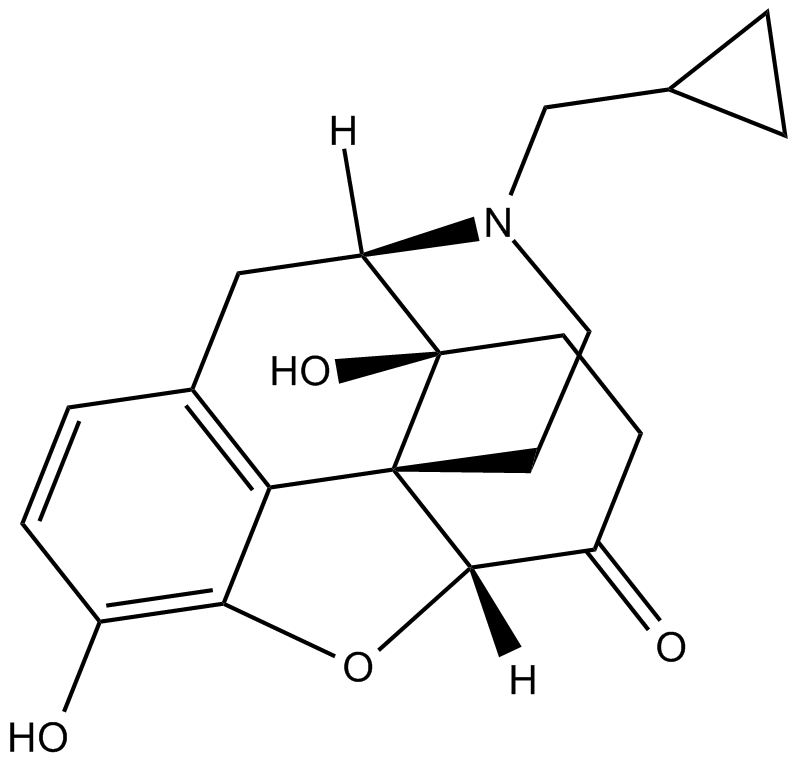Opioid Receptor
Opioid receptor is a group of G protein-coupled receptors with opioids as ligands.
Produkte für Opioid Receptor
- Bestell-Nr. Artikelname Informationen
-
GC60391
β-Casomorphin, bovine TFA

-
GC61484
β-Casomorphin, human TFA
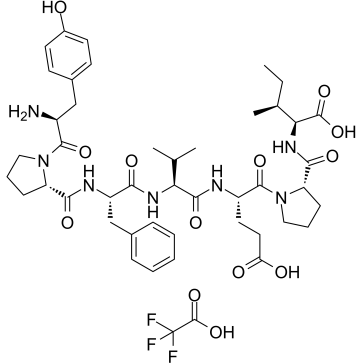
-
GC38005
β-Endorphin, equine
β-Endorphin, equine ist ein endogenes Opioidpeptid, das mit hoher Affinität an beide μ/δ-Opioidrezeptoren bindet.
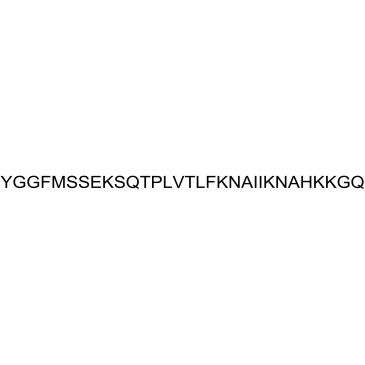
-
GC38030
β-Endorphin, equine (TFA)
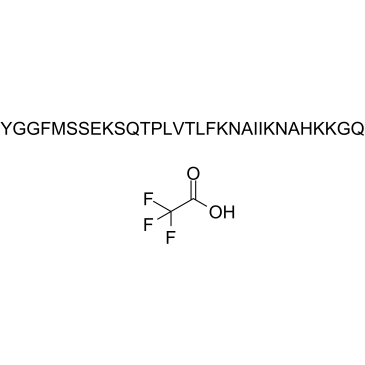
-
GC33736
β-Casomorphin, bovine (β-Casomorphin-7 (bovine))
β-Casomorphin, Rind (β-Casomorphin-7 (Rind)) (⋲-Casomorphin-7 (Rind) ) ist ein Opioid-Peptid mit einem IC50 von 14 μM in einem Opioidrezeptor-Bindungsassay.
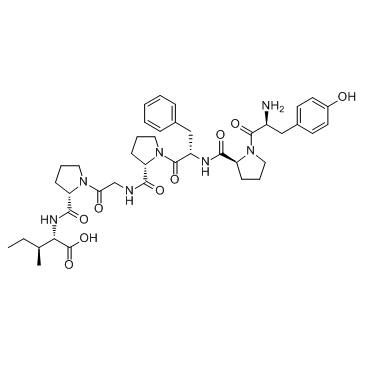
-
GC33784
β-Casomorphin, human (Human β-casomorphin 7)
ist ein Opioidpeptid, wirkt als Agonist des Opioidrezeptors.
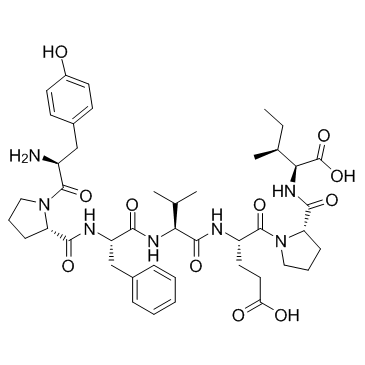
-
GC31117
β-Endorphin, human
β-Endorphin, human, ein prominentes endogenes Peptid, das in der Hypophyse cerebri und im Hypothalamus vorkommt, ist ein Agonist des Opioidrezeptors mit bevorzugter Affinität für den μ-Opioidrezeptor und den δ-Opioidrezeptor; β-Endorphin, Mensch zeigt antinozizeptive Aktivität.

-
GC15938
β-Funaltrexamine hydrochloride
μ opioid receptor antagonist
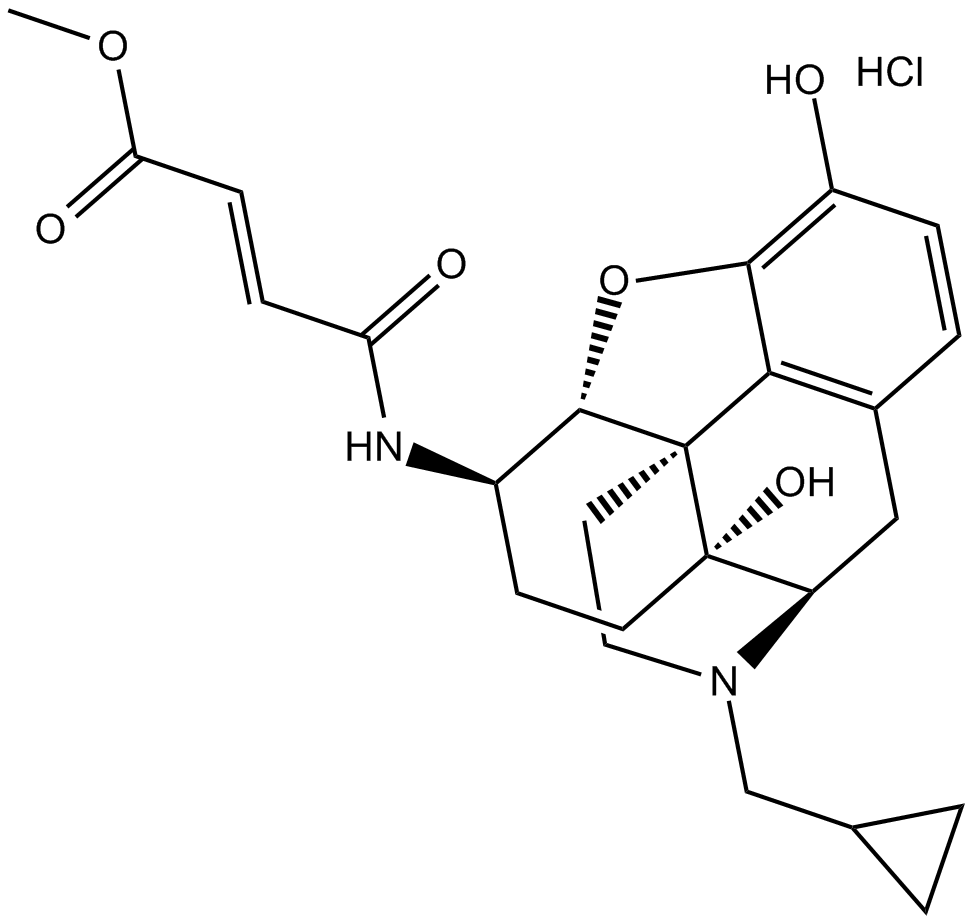
-
GC64007
(±)-U-50488 hydrate hydrochloride
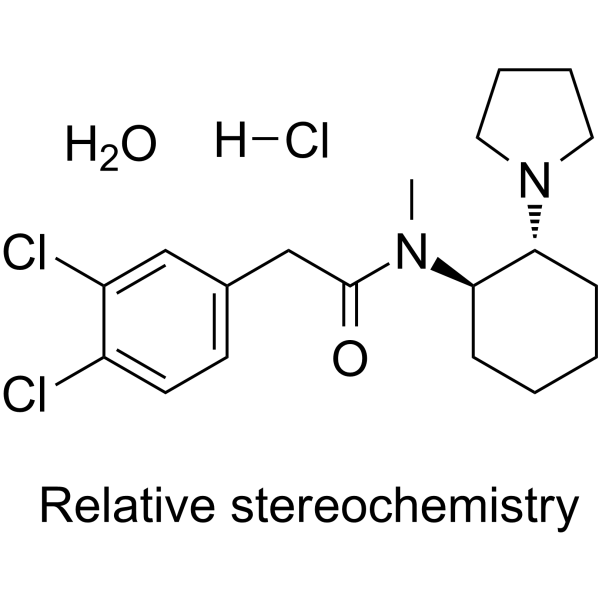
-
GC15885
(±)-U-50488 hydrochloride
κ-opioid receptor agonist, selective
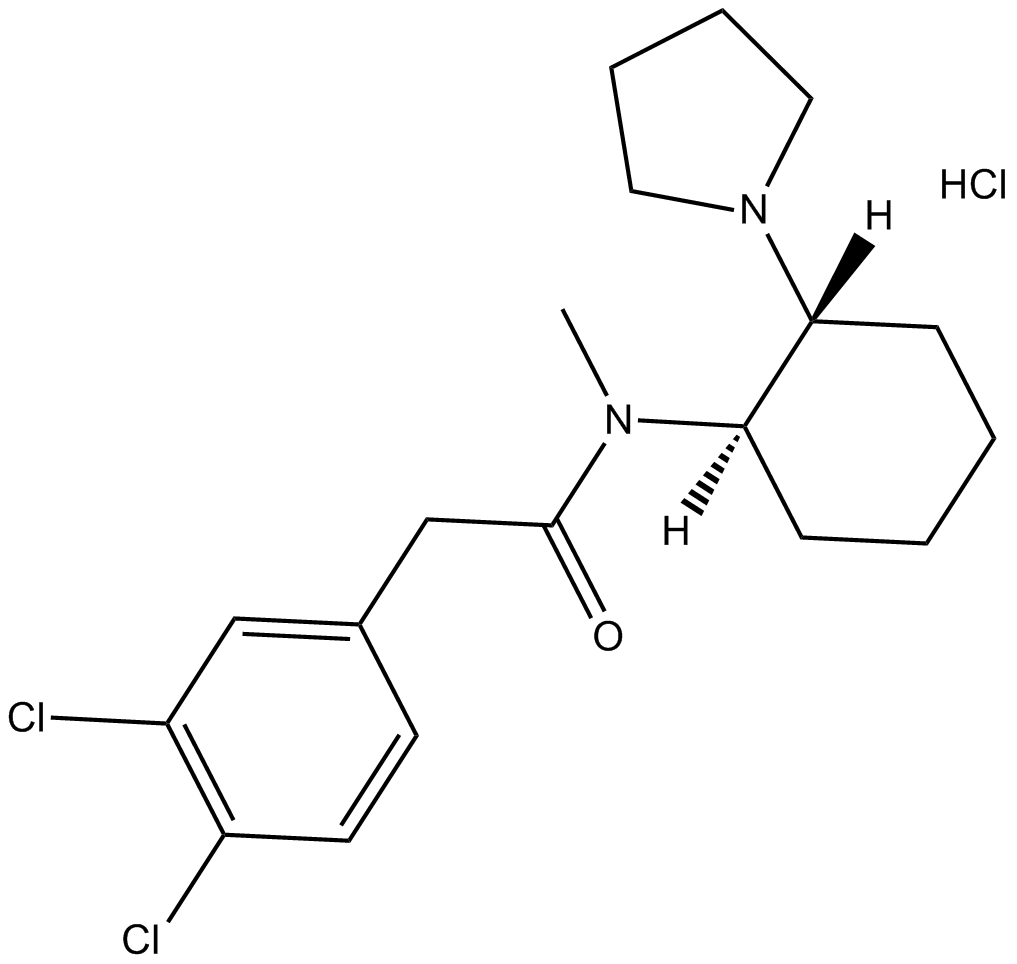
-
GC12688
(+)-U-50488 hydrochloride
Selective κ-opioid agonist
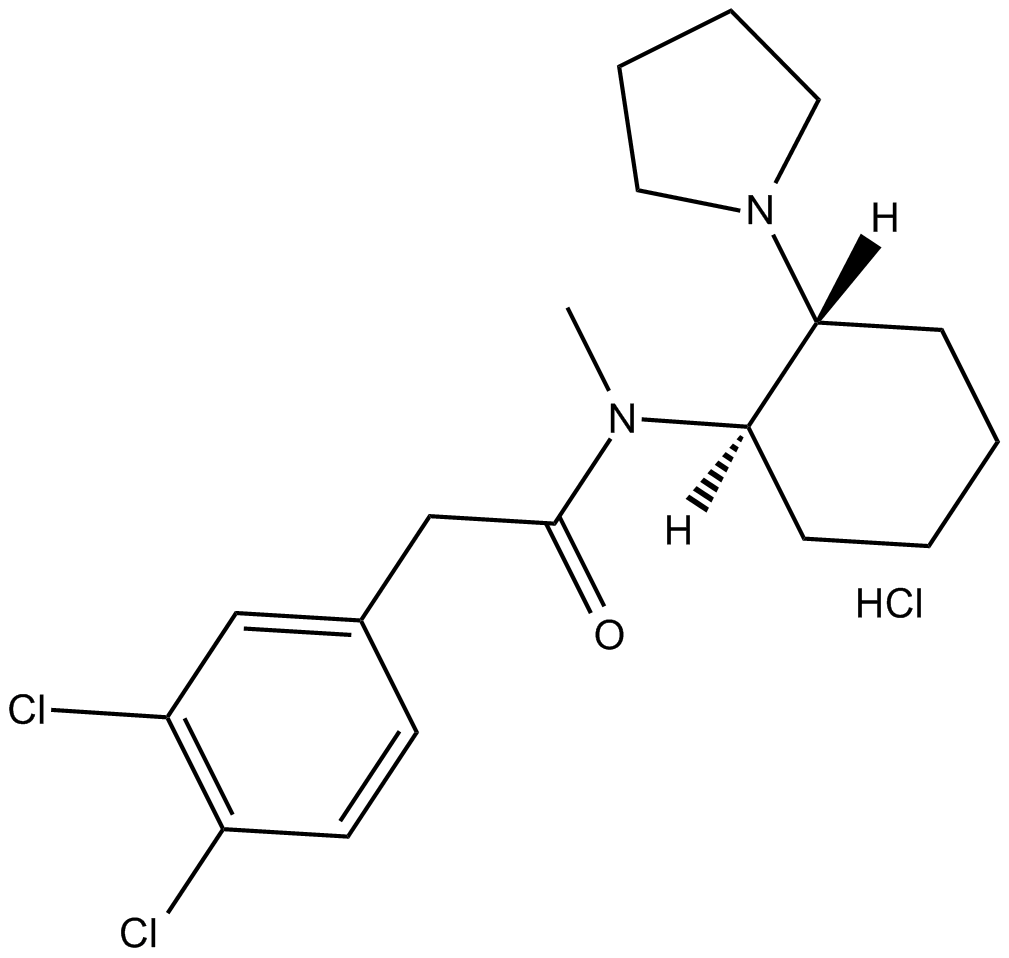
-
GC15944
(-)-U-50488 hydrochloride
κ-opioid receptor agonist, selective
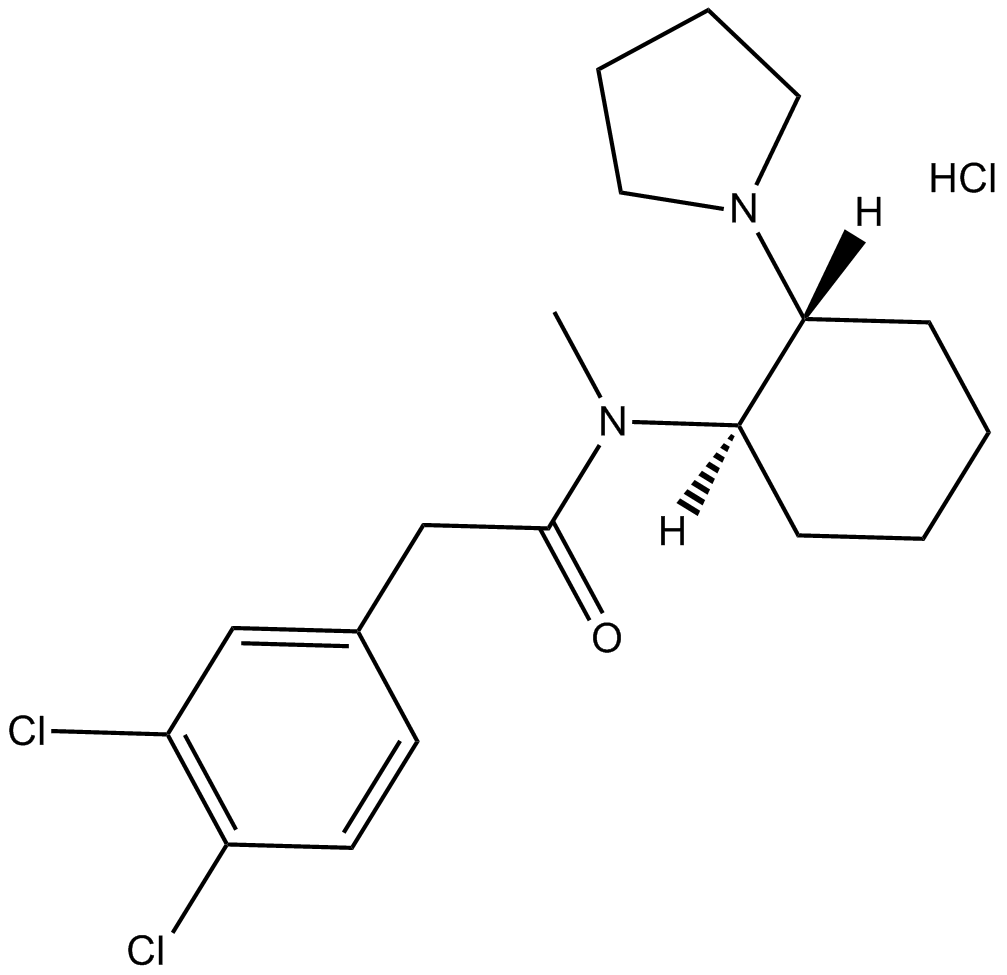
-
GC70081
(1R,2R)-U-50488 hydrochloride
(1R,2R)-U-50488 Hydrochlorid ist die absolute Konfiguration von (±)-U-50488 Hydrochlorid. (±)-U-50488 Hydrochlorid ist ein Agonist des κ-Opioidrezeptors.
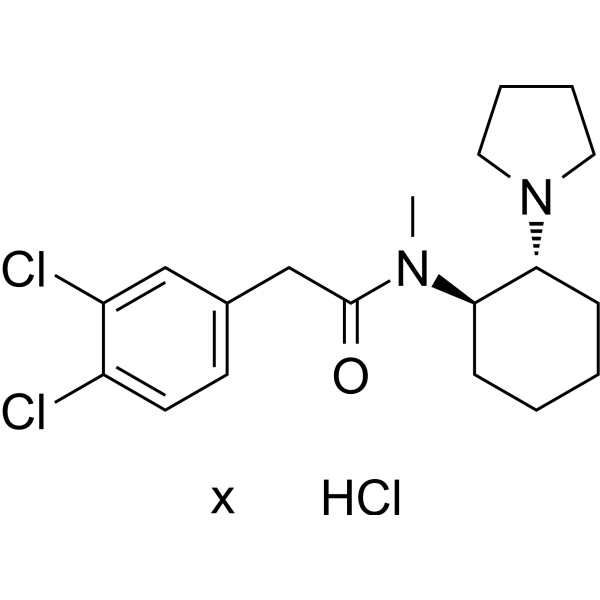
-
GC69798
(Rac)-SNC80
(Rac)-SNC80 ist das Racemat von SNC80. SNC80 (NIH 10815) ist ein wirksamer und hochselektiver nicht-peptidischer Agonist des δ-Opioidrezeptors mit einem Ki-Wert von 1,78 nM und einem IC50-Wert von 2,73 nM. SNC80 hat eine neuroprotektive, antinociceptive und antidepressive Wirkung und kann für die Erforschung verschiedener Kopfschmerzarten verwendet werden.
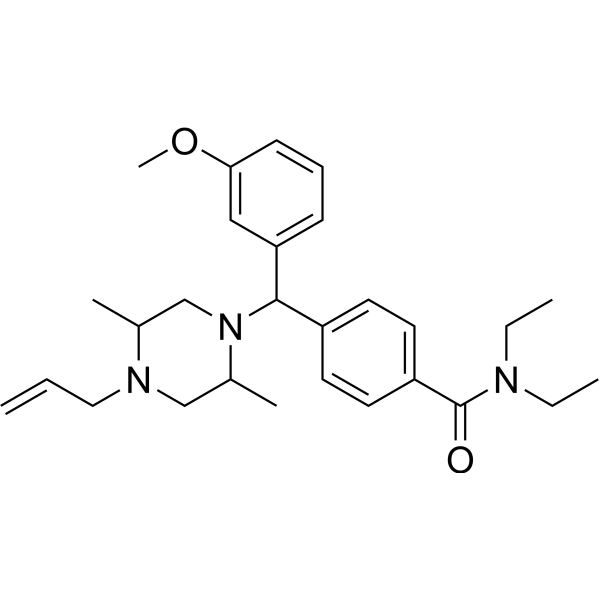
-
GC66679
2,6-Dimethyl-L-tyrosine
2,6-Dimethyl-L-tyrosin (Dmt) ist ein Tyrosinderivat, das die Rezeptoraffinität, die funktionelle Bioaktivität und die In-vivo-Analgesie von Opioidpeptiden verbessert.

-
GC64147
Acetyl tetrapeptide-15
Acetyltetrapeptid-15 ist ein synthetisches Peptid, das in der Kosmetik fÜr empfindliche Haut verwendet wird.
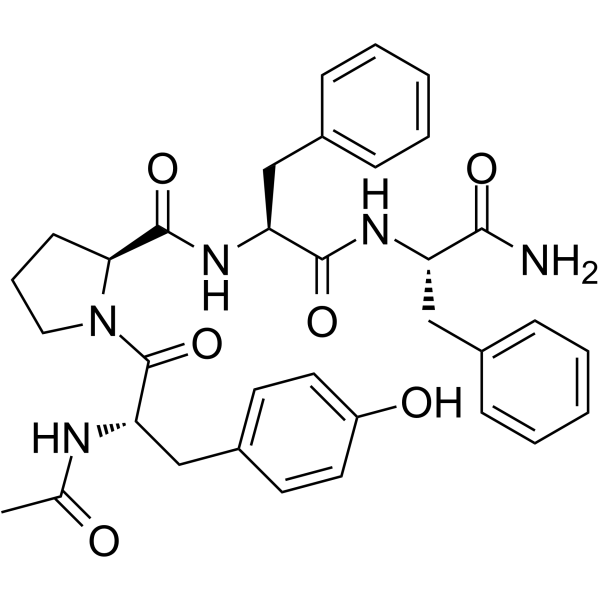
-
GC11829
ADL5859 HCl
ADL5859 HCl (Verbindung 20) ist ein selektives und oral aktives δ Opioidrezeptor (DOR)-Agonist mit einem Ki- und einem EC50-Wert von 0,84 bzw. 20 nM.
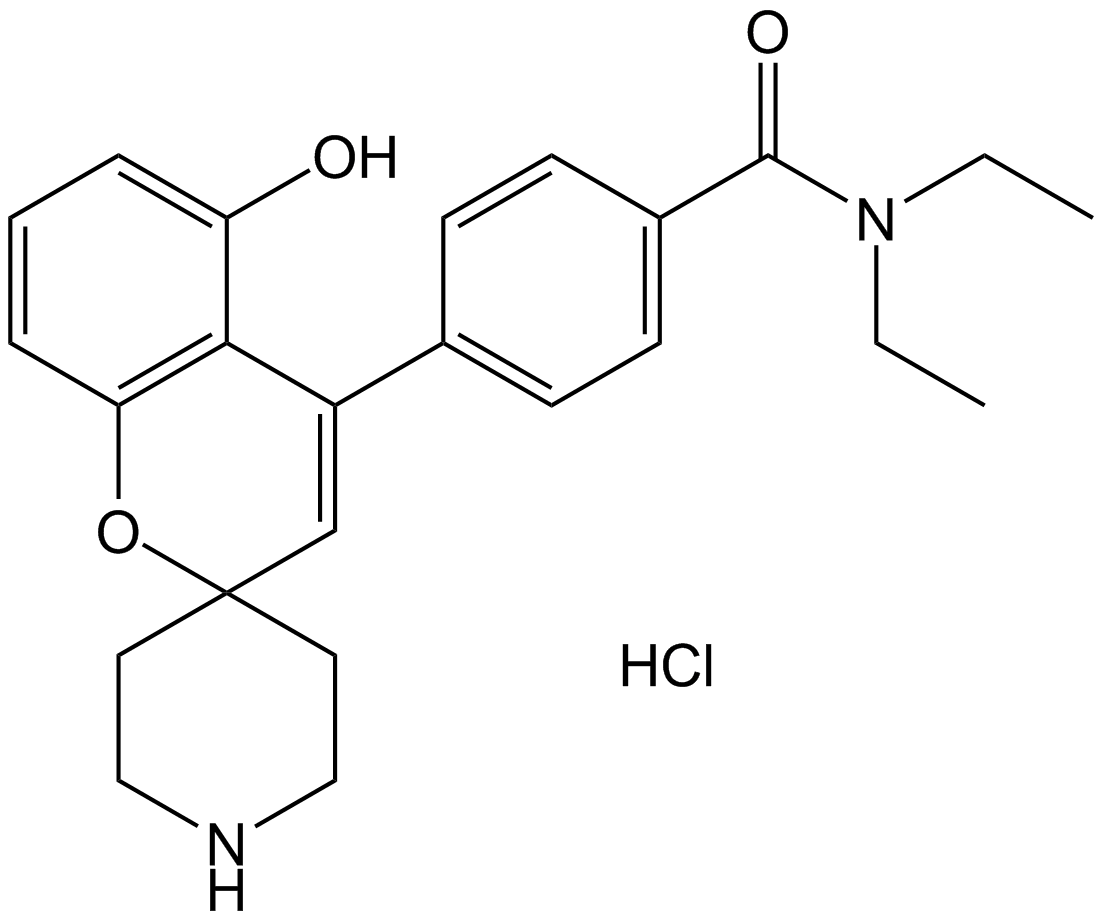
-
GP10109
Adrenorphin
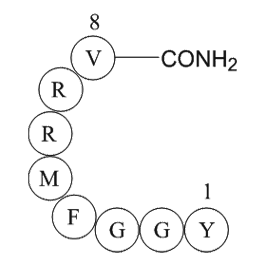
-
GC17623
Alvimopan
A μ-opioid receptor antagonist
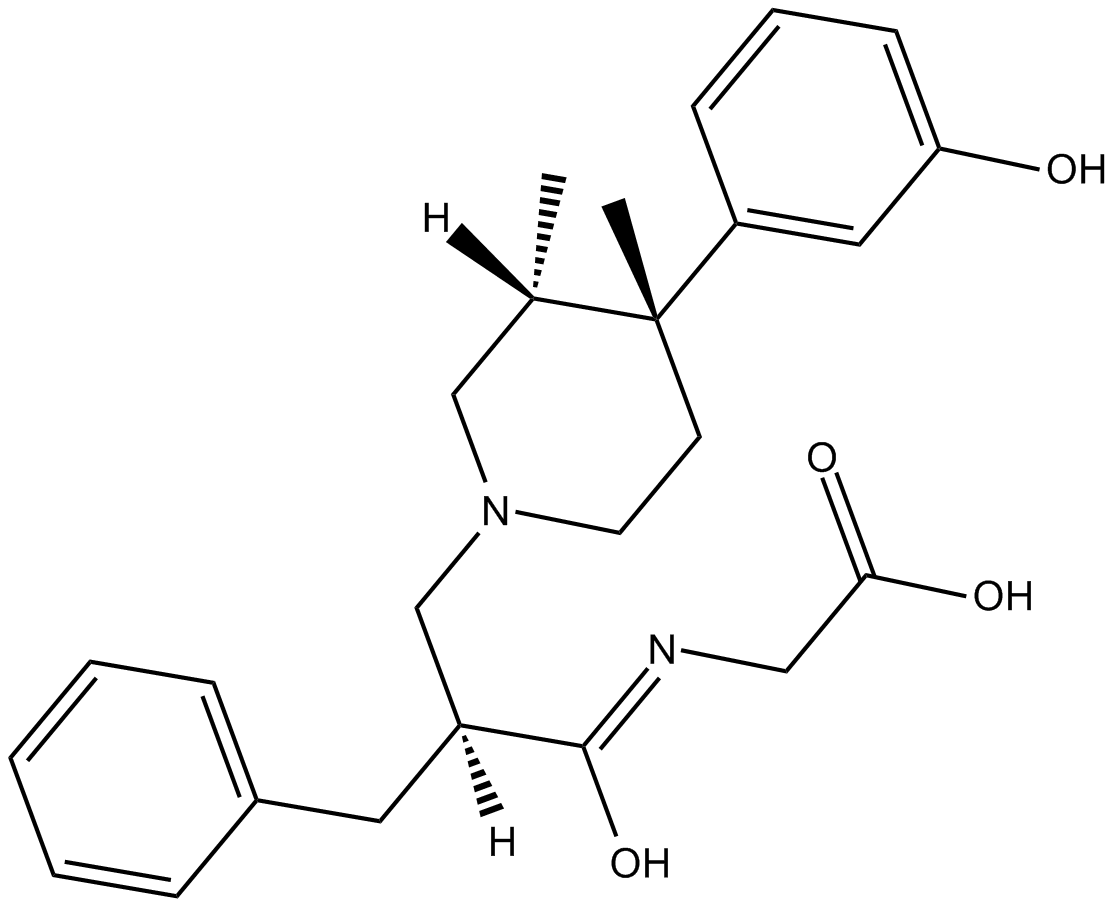
-
GC12619
Alvimopan dihydrate
A μ-opioid receptor antagonist
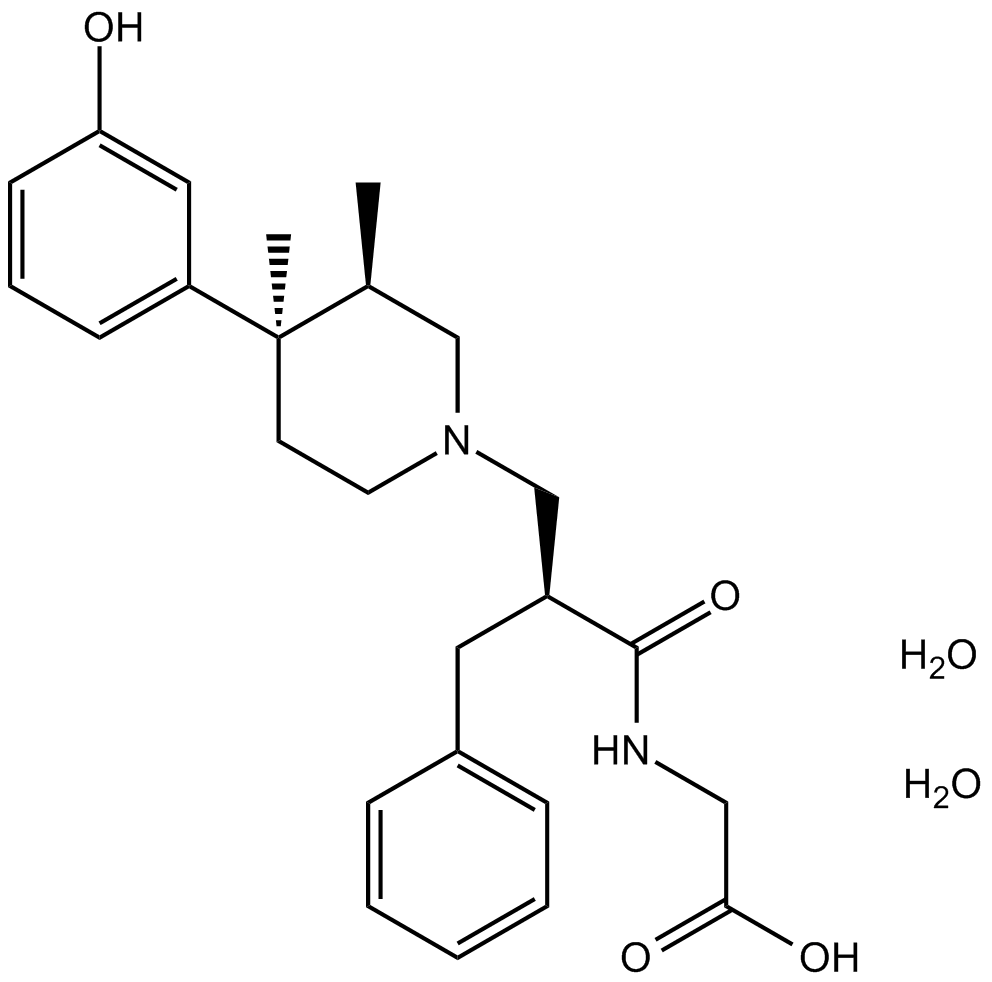
-
GC35311
Alvimopan monohydrate
Alvimopan-Monohydrat (ADL 8-2698-Monohydrat) ist ein potenter, selektiver, oral aktiver und reversibler μ-Opioidrezeptor-Antagonist mit einem IC50-Wert von 1,7 nM.
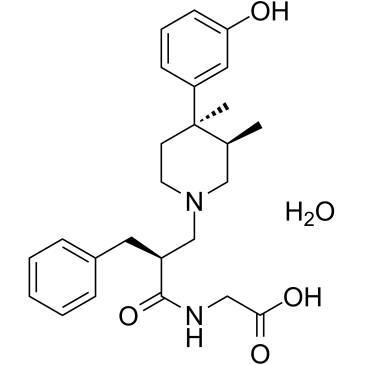
-
GC12219
AR-M 1000390 hydrochloride
AR-M 1000390 Hydrochlorid ist ein außergewÖhnlich selektiver, potenter δ-Opioid-Rezeptor-Agonist mit einem EC50-Wert von 7,2±0,9 nM fÜr die δ-Agonisten-Potenz.
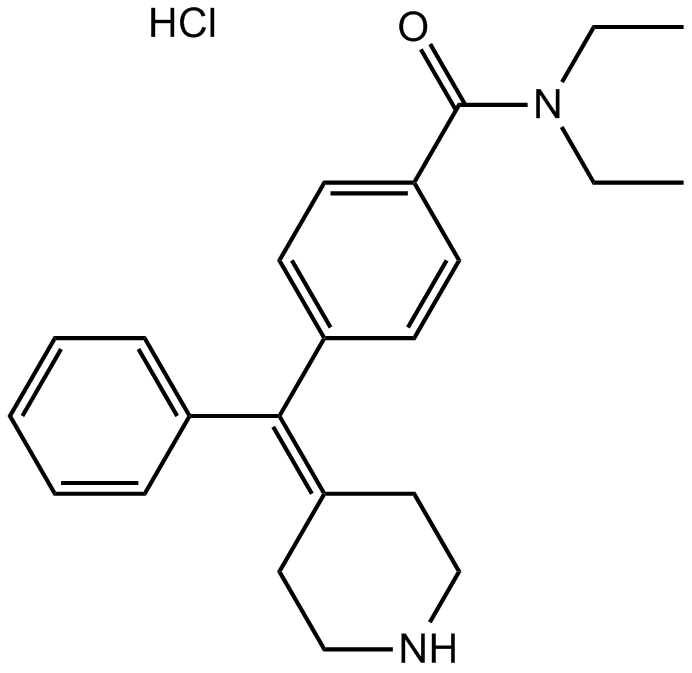
-
GC31762
Asimadoline (EMD-61753)
Asimadolin (EMD-61753) (EMD-61753) ist ein oral aktiver, selektiver und peripher aktiver κ-Opioid-Agonist mit IC50-Werten von 5,6 nM (Meerschweinchen) und 1,2 nM (human rekombinant).
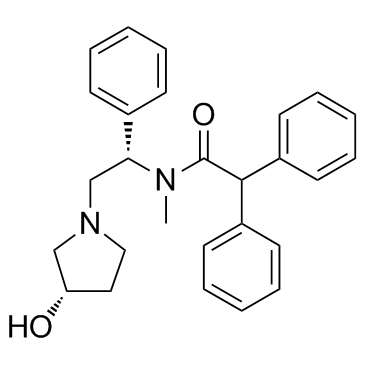
-
GC61397
Asimadoline hydrochloride
Asimadolin (EMD-61753) Hydrochlorid ist ein oral aktiver, selektiver und peripher aktiver κ-Opioid-Agonist mit IC50-Werten von 5,6 nM (Meerschweinchen) und 1,2 nM (human rekombinant).
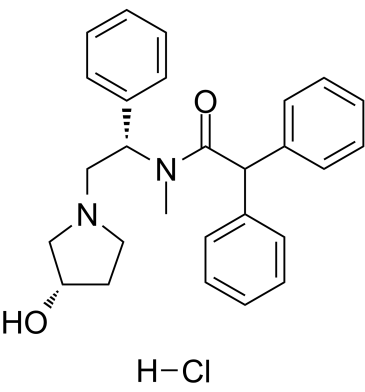
-
GC11390
BAM 22P
BAM 22P, ein hochpotentes Opioidpeptid, ist ein potenter Opioidagonist.

-
GC15926
BAN ORL 24
A nociceptin receptor antagonist
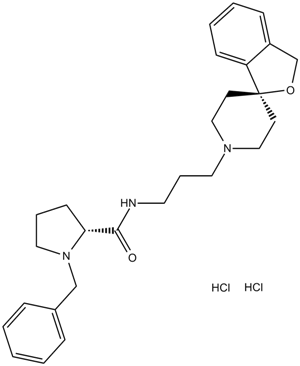
-
GC30639
Bevenopran (CB-5945)
Bevenopran (CB-5945) ist ein peripherer μ-Opioidrezeptorantagonist.
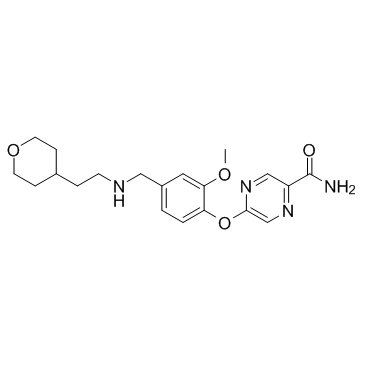
-
GC38741
BPR1M97
BPR1M97 ist ein Dualwirkstoff-Agonist des Mu-Opioidrezeptors (MOP) und des Nociceptin-Orphanin-FQ-Peptid (NOP)-Rezeptors mit Ki-Werten von 1,8 bzw. 4,2 nM.
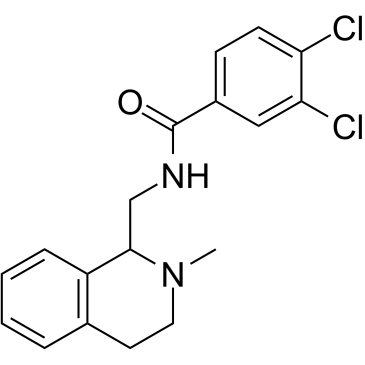
-
GC15313
BRL 52537 hydrochloride
κ/μ opioid receptor agonist,potent and selective
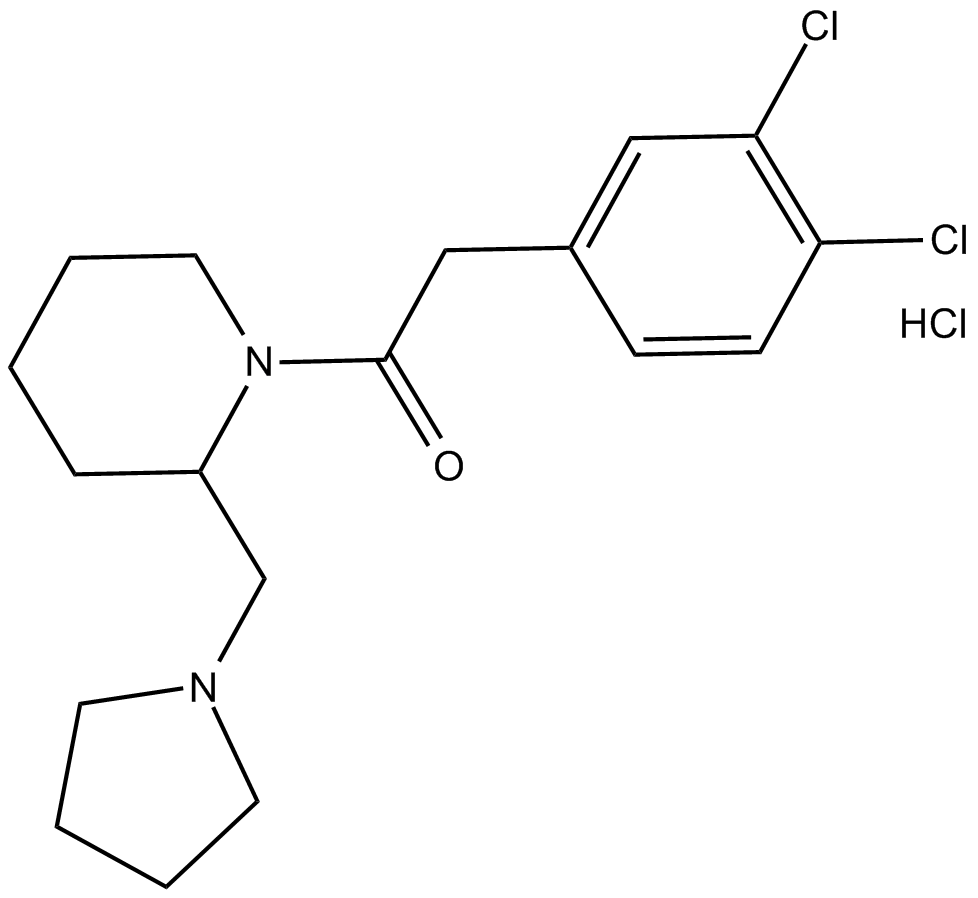
-
GC16521
BW 373U86
BW 373U86 (SNC86) ist ein δ-Opioidrezeptoragonist mit einem IC50 von 1,49 nM.
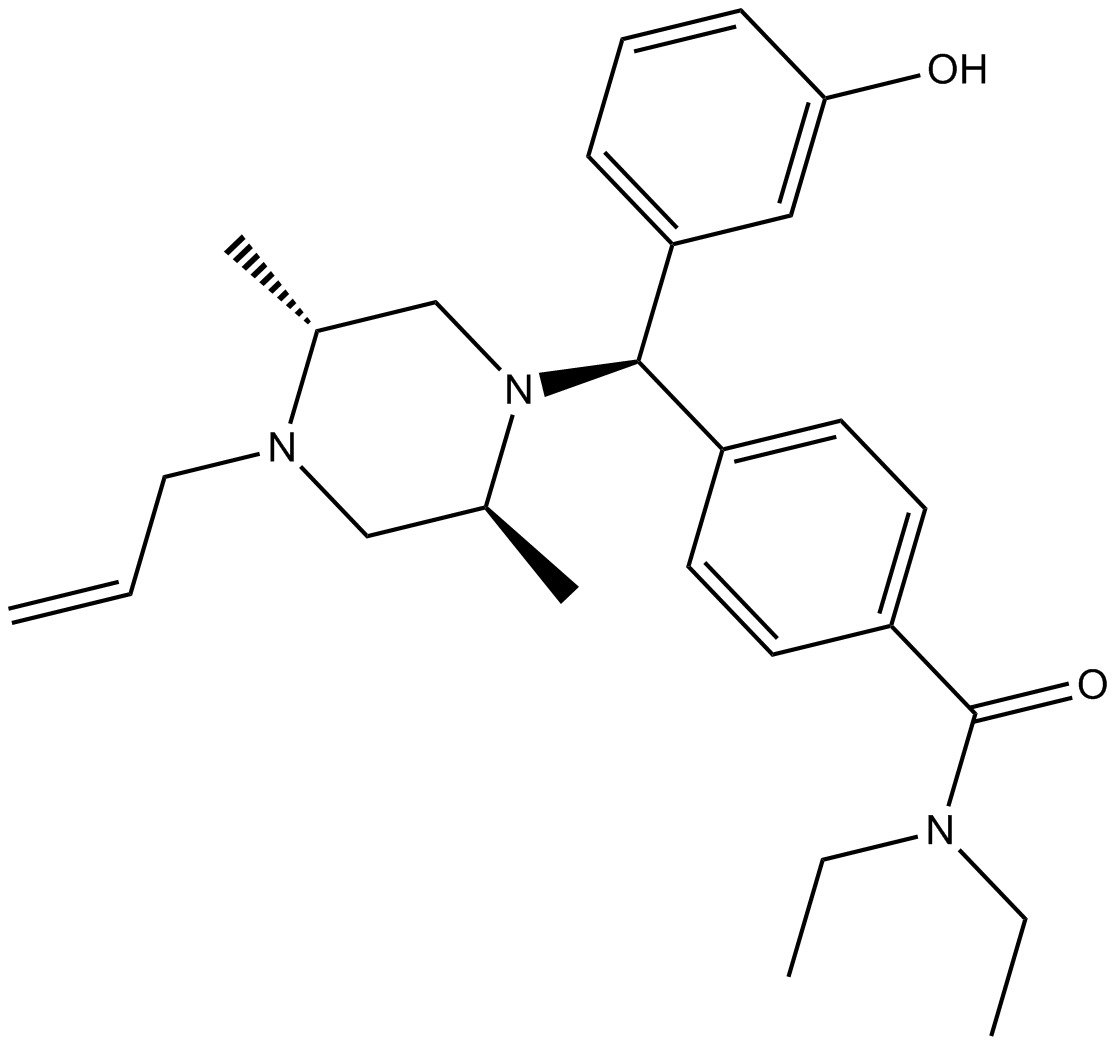
-
GC67907
CCG258747
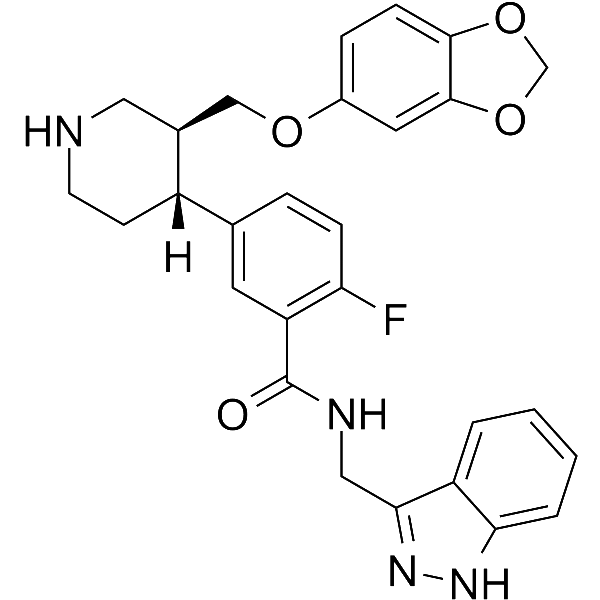
-
GC35637
Cebranopadol
Cebranopadol ist ein analgetisches NOP- und Opioid-Rezeptor-Agonist mit Kis/EC50s von 0,9 nM/13 nM, 0,7 nM/1,2 nM, 2,6 nM/17 nM, 18 nM/110 nM fÜr humanes NOP, MOP, KOP und Delta-Opioid-Peptid ( DOP)-Rezeptor.
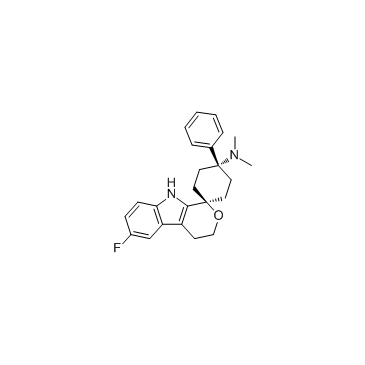
-
GC35638
Cebranopadol ((1α,4α)stereoisomer)
Cebranopadol ((1α,4α)Stereoisomer) ist ein Stereoisomer von Cebranopadol.
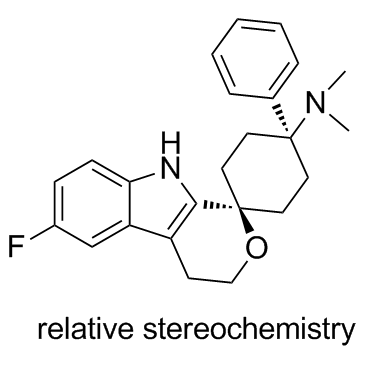
-
GC19229
CERC-501
CERC-501 (CERC-501) ist ein potenter und zentral penetrierender Kappa-Opioidrezeptor-Antagonist mit einem Ki von 0,807 nM.

-
GC11535
CTAP
CTAP ist ein potenter, hochselektiver und BBB-penetrierender μ-Opioidrezeptorantagonist mit einem IC50 von 3,5 nM.
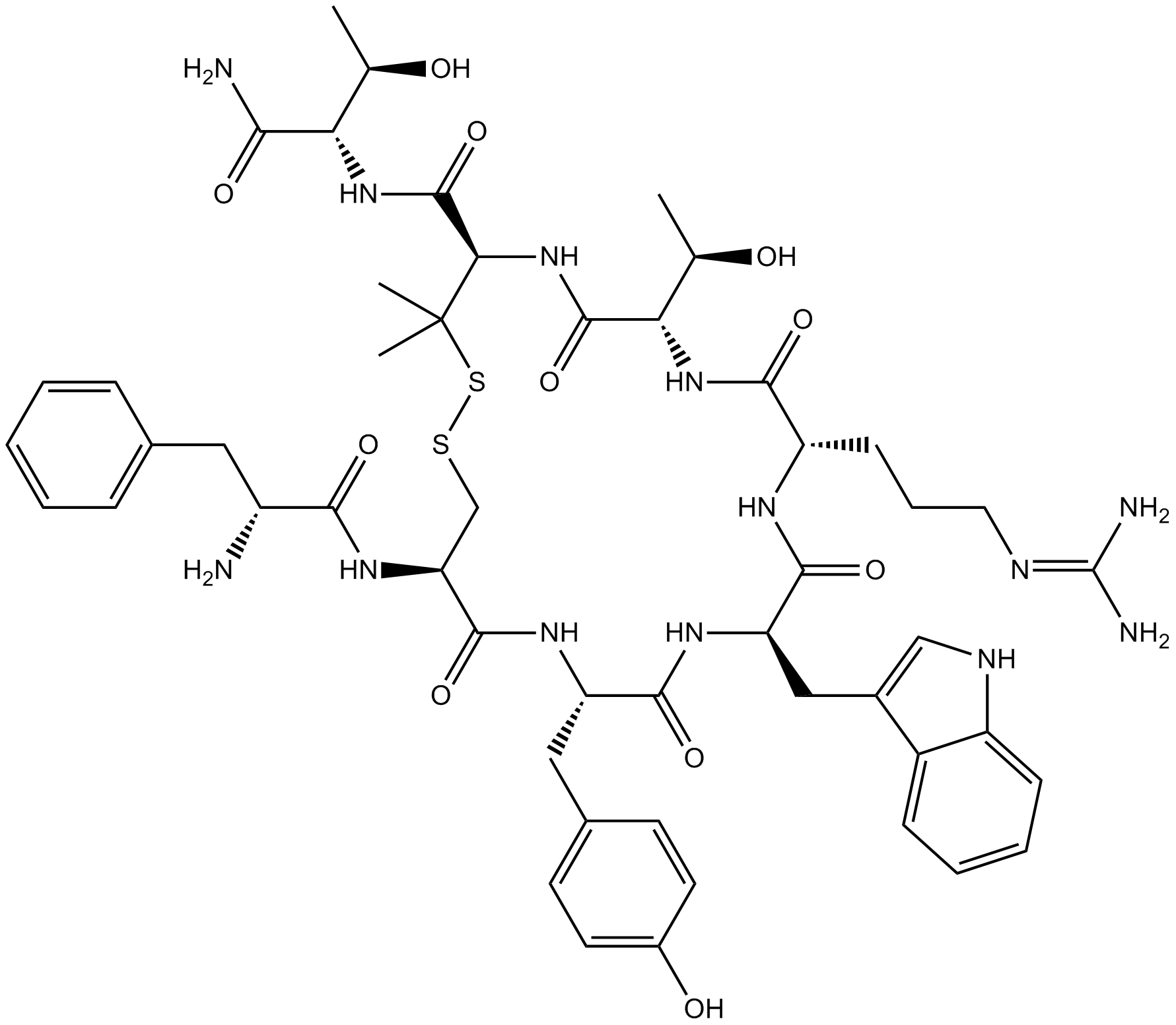
-
GC60730
CTAP TFA
CTAP TFA ist ein potenter, hochselektiver und BBB-penetrierender μ-Opioidrezeptor-Antagonist mit einem IC50 von 3,5 nM.

-
GC16888
CTOP
CTOP ist ein potenter und hochselektiver μ-Opioidrezeptor-Antagonist.
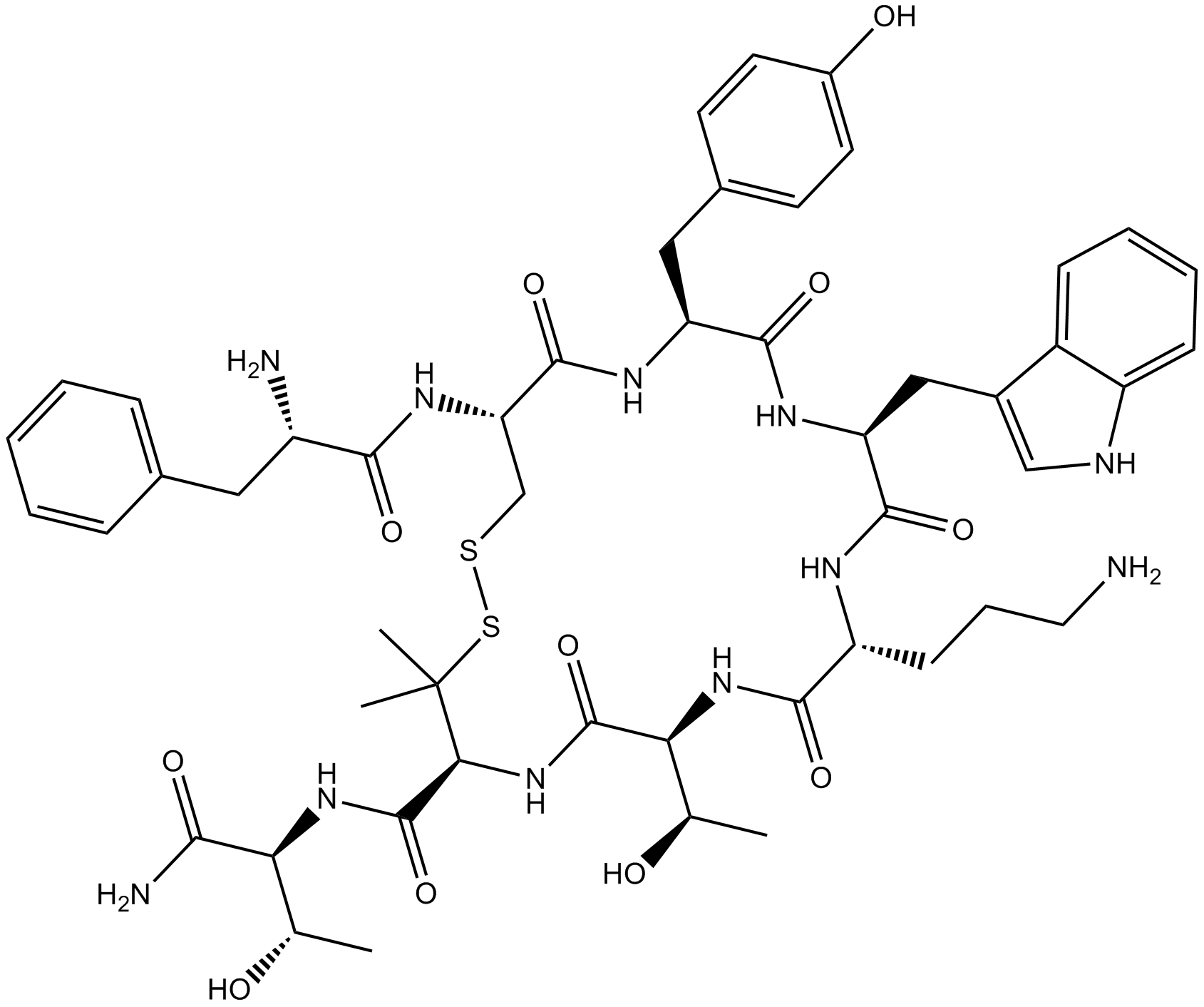
-
GC60731
CTOP TFA
CTOP TFA ist ein potenter und hochselektiver μ-Opioid-Rezeptor-Antagonist.
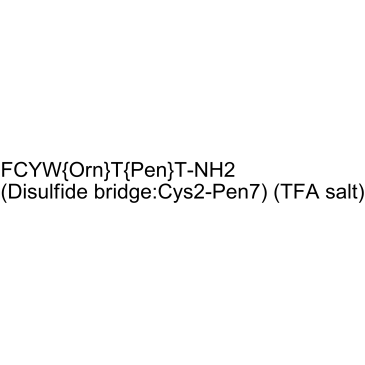
-
GC13189
Cyprodime hydrochloride
μ-opioid receptor antagonist
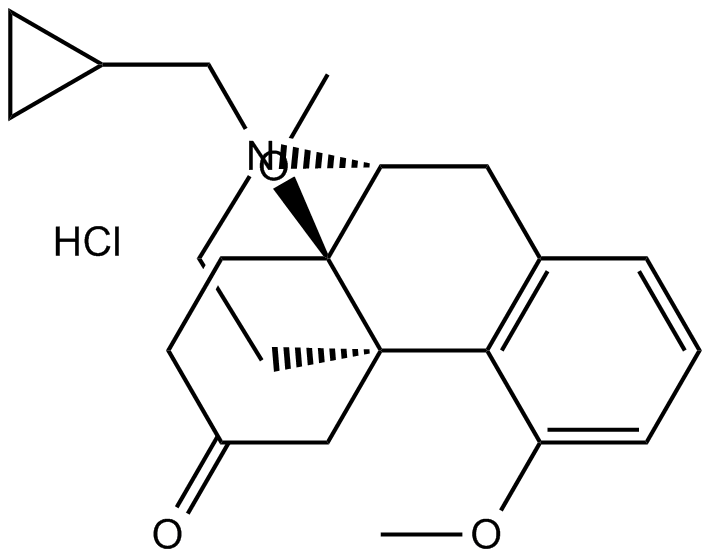
-
GC17677
DADLE
δ-opioid receptor agonist
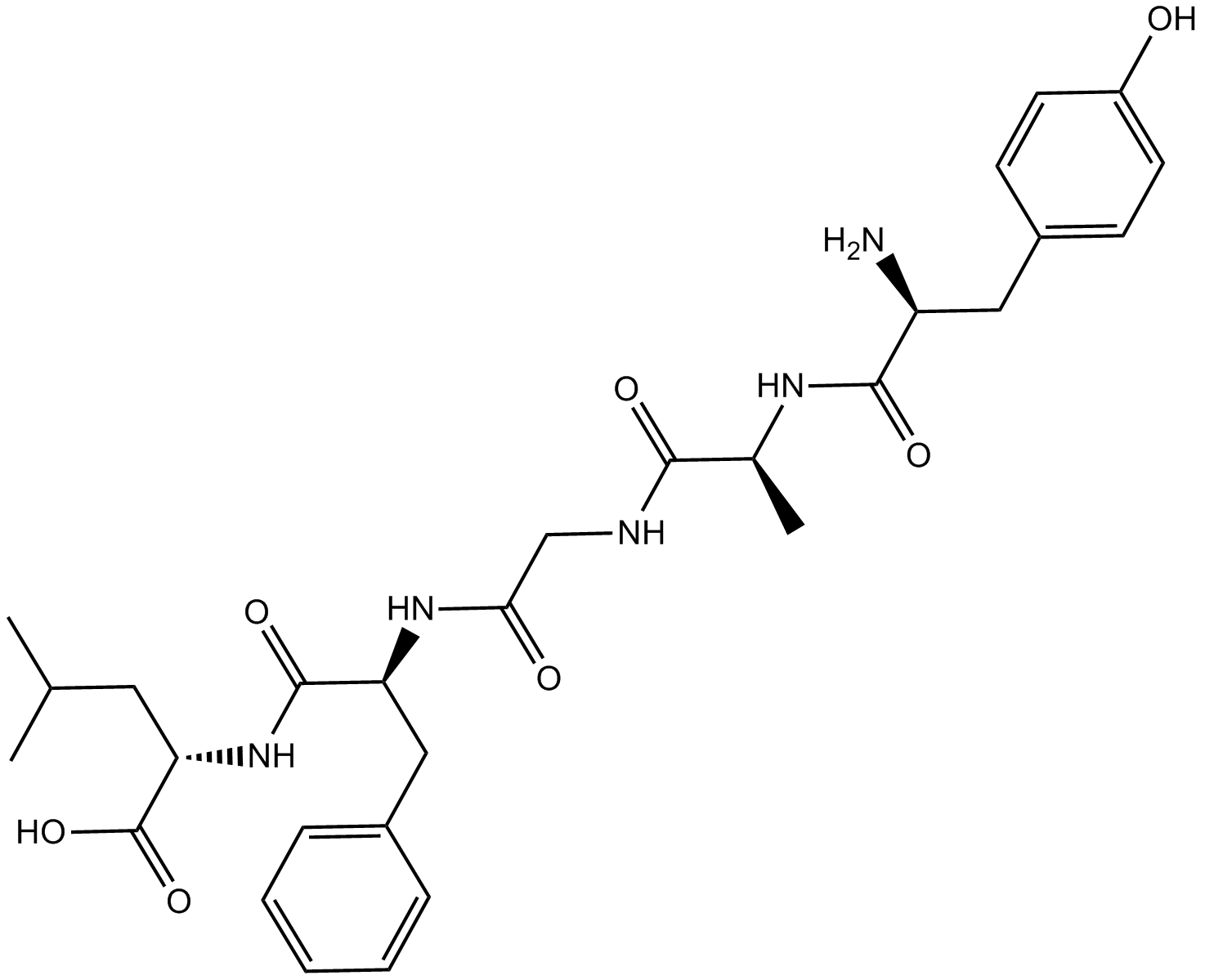
-
GC10803
DAMGO
DAMGO ist ein μ-Opioidrezeptor (μ-OPR)-selektiver Agonist mit einer Kd von 3,46 nM fÜr natives μ-OPR.
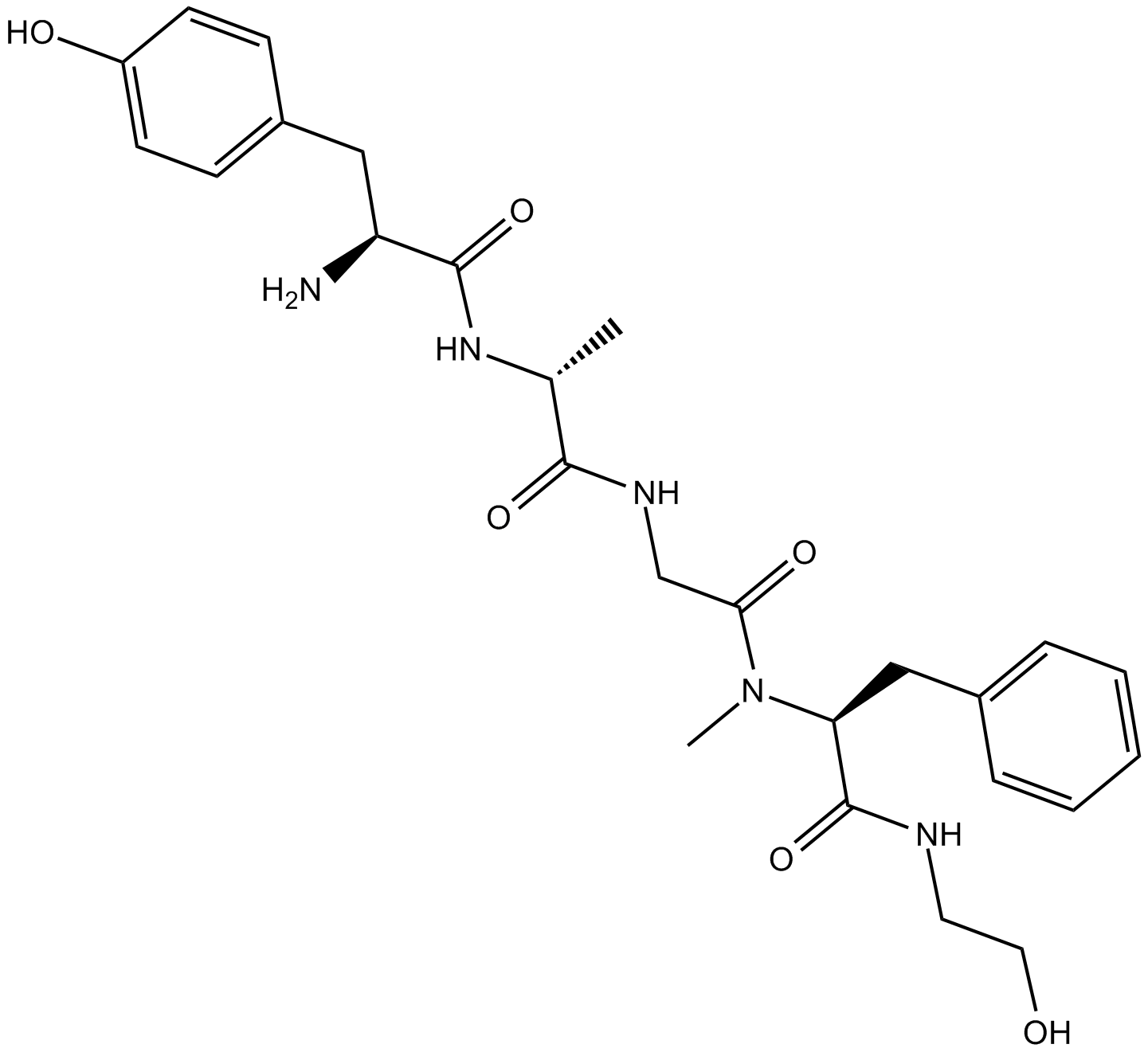
-
GC35805
DAMGO (TFA)
DAMGO (TFA) ist ein μ-Opioidrezeptor (μ-OPR)-selektiver Agonist mit einer Kd von 3,46 nM für natives μ-OPR.
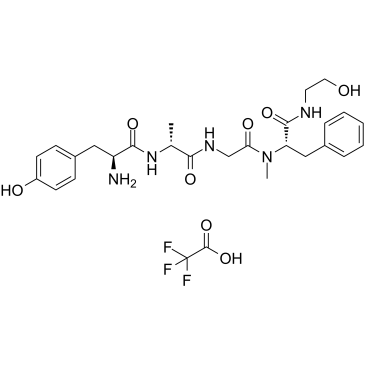
-
GC61954
Deltorphin 2 TFA
Deltorphin 2 TFA ist ein selektiver Peptidagonist fÜr den δ-Opioidrezeptor.
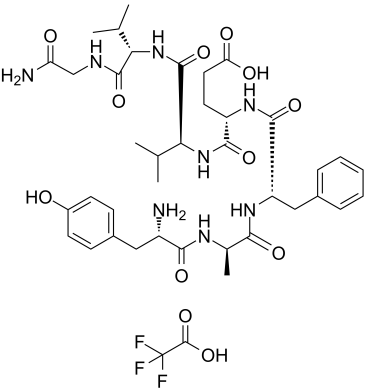
-
GC12143
Deltorphin I
Deltorphin I ist ein δ-Opioid-Rezeptoragonist mit hoher AffinitÄt und SelektivitÄt.
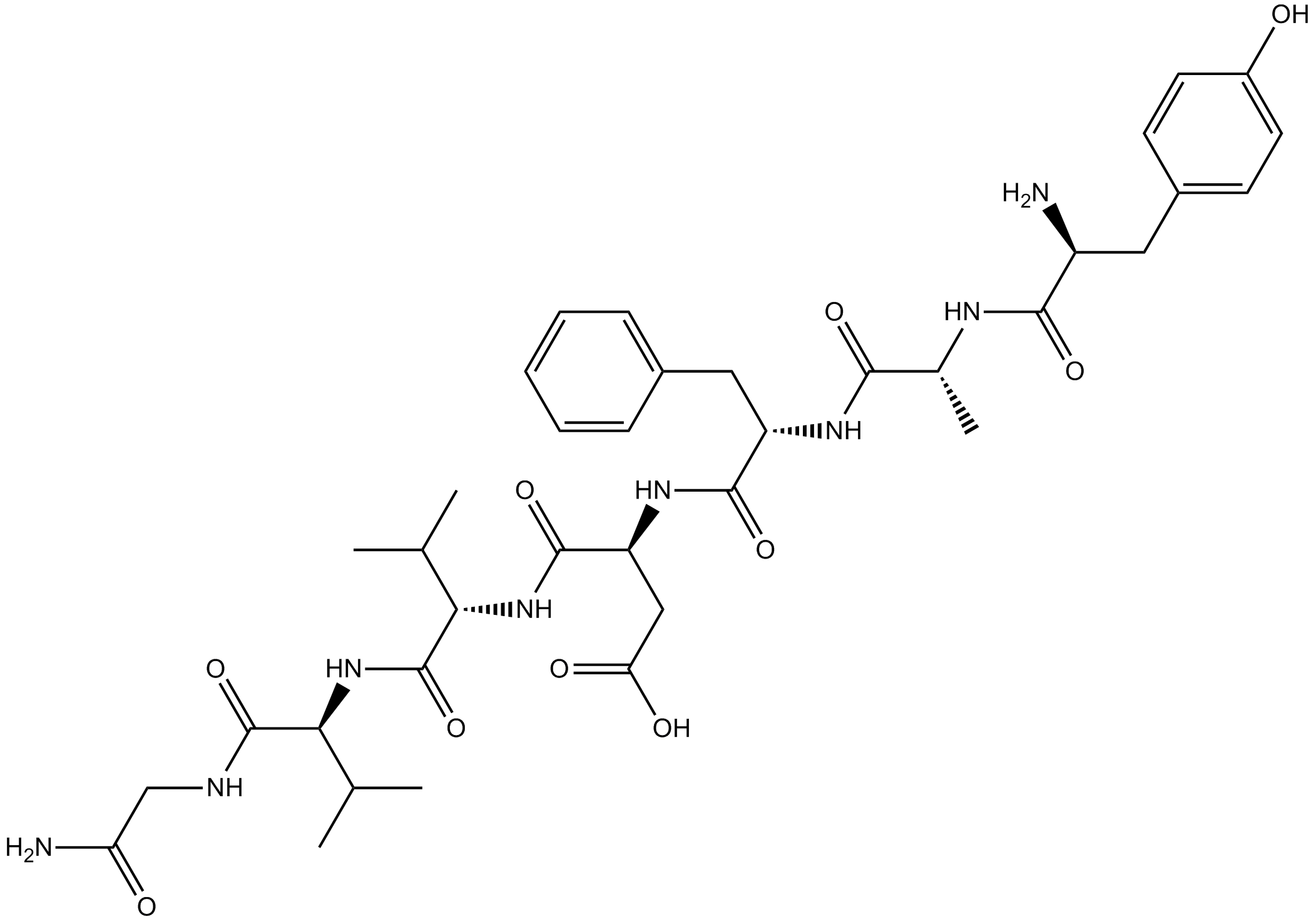
-
GC31168
Dermorphin
Dermorphin ist ein natÜrlicher Heptapeptid-μ-Opioidrezeptor (MOR)-Agonist, der in Amphibienhaut vorkommt.
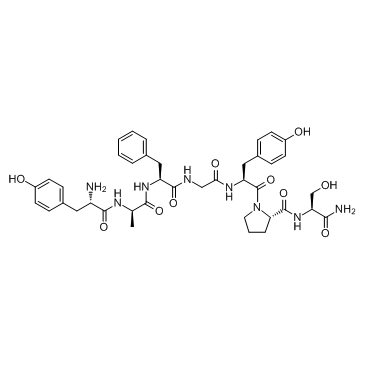
-
GC34223
Dermorphin Analog
Dermorphin-Analogon ist ein Analogon von Dermorphin.
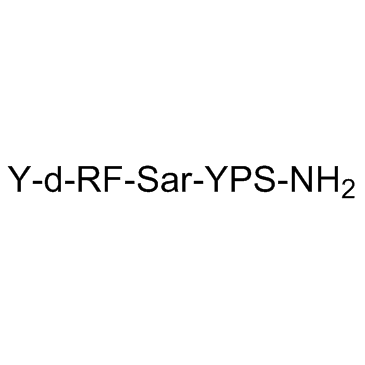
-
GC17553
DIPPA hydrochloride
DIPPA (Hydrochlorid) ist ein irreversibler, langanhaltender, selektiver und hochaffiner κ-Opioidrezeptor-Antagonist.
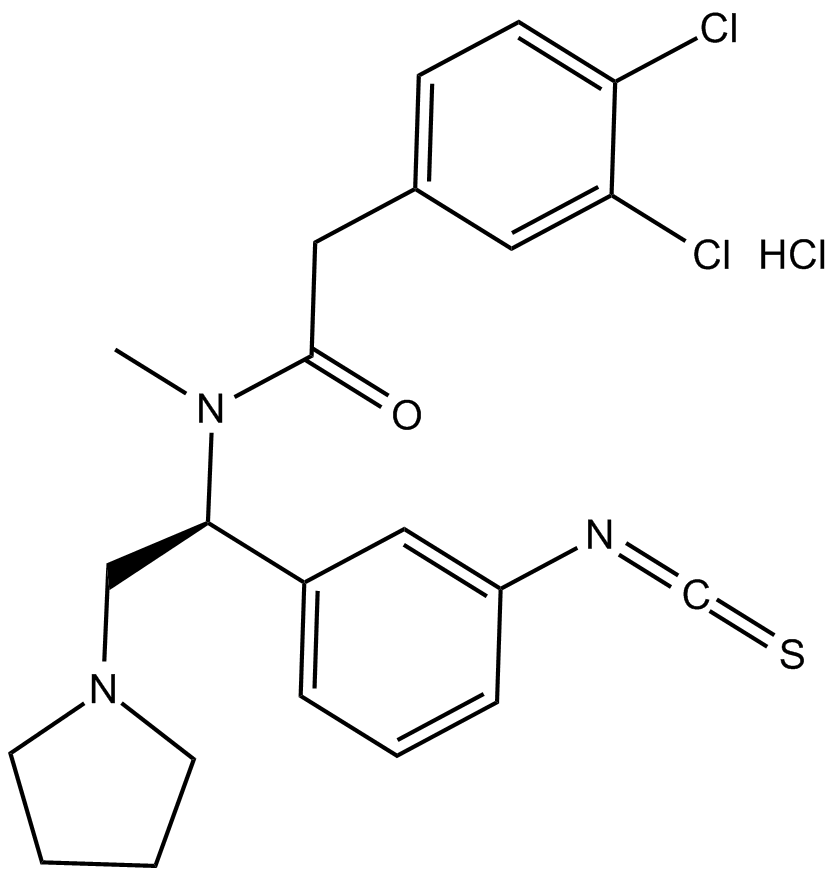
-
GC10333
DPDPE
DPDPE, ein Opioidpeptid, ist ein selektiver δ-Opioidrezeptor(DOR)-Agonistmit krampflÖsender Wirkung.
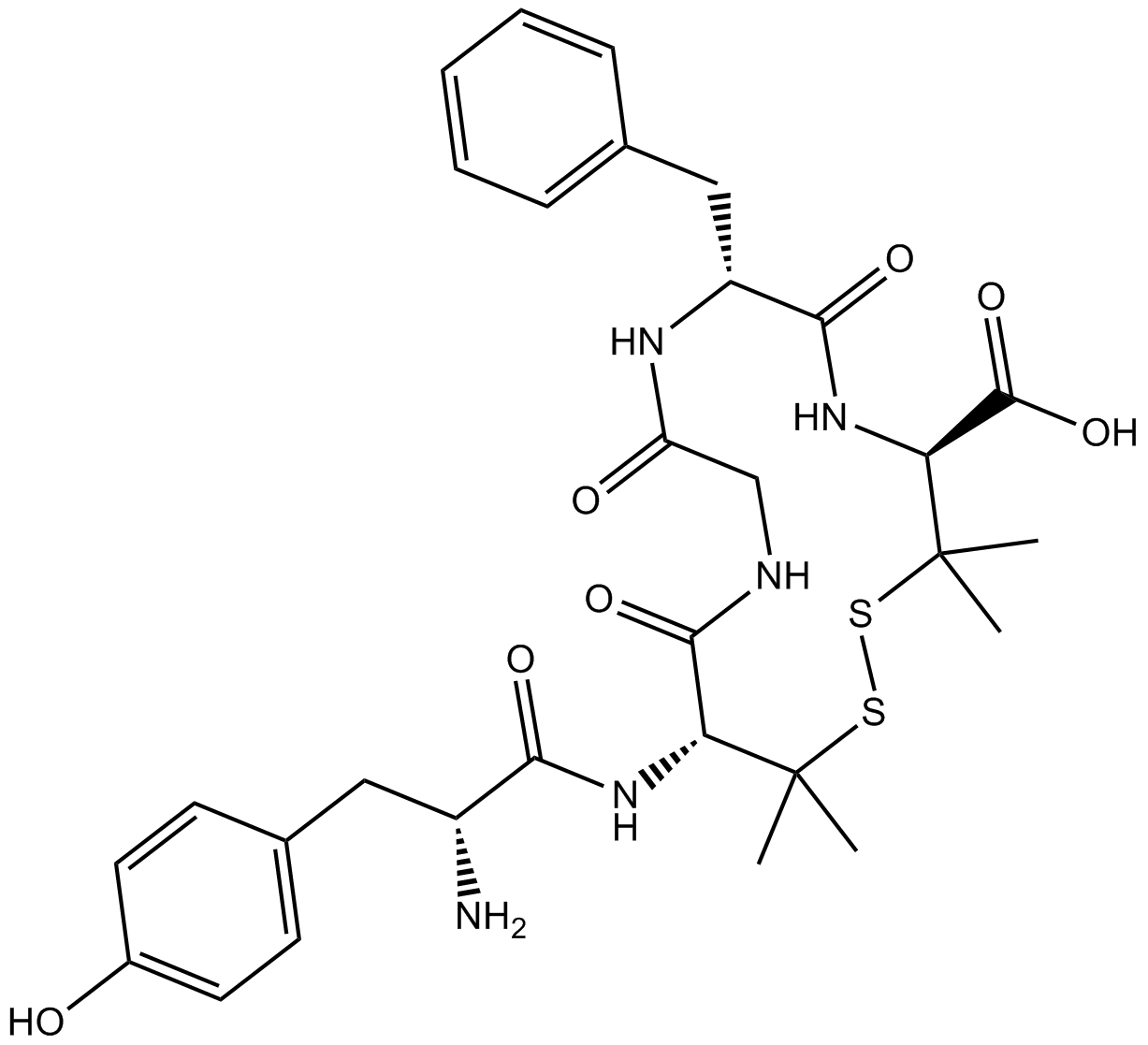
-
GC63431
DPDPE TFA
DPDPE TFA, ein Opioidpeptid, ist ein selektiver δ-Opioidrezeptor(DOR)-Agonistmit krampflÖsender Wirkung.
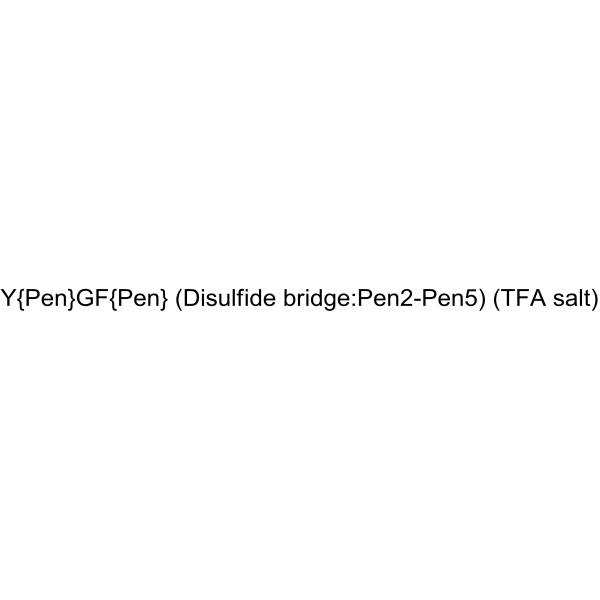
-
GC14774
DSLET
δ Opioid receptor agonist

-
GC13546
Dynorphin A
Dynorphin A ist ein endogenes Opioidpeptid, das an der inhibitorischen Neurotransmission im Zentralnervensystem (ZNS) beteiligt ist.
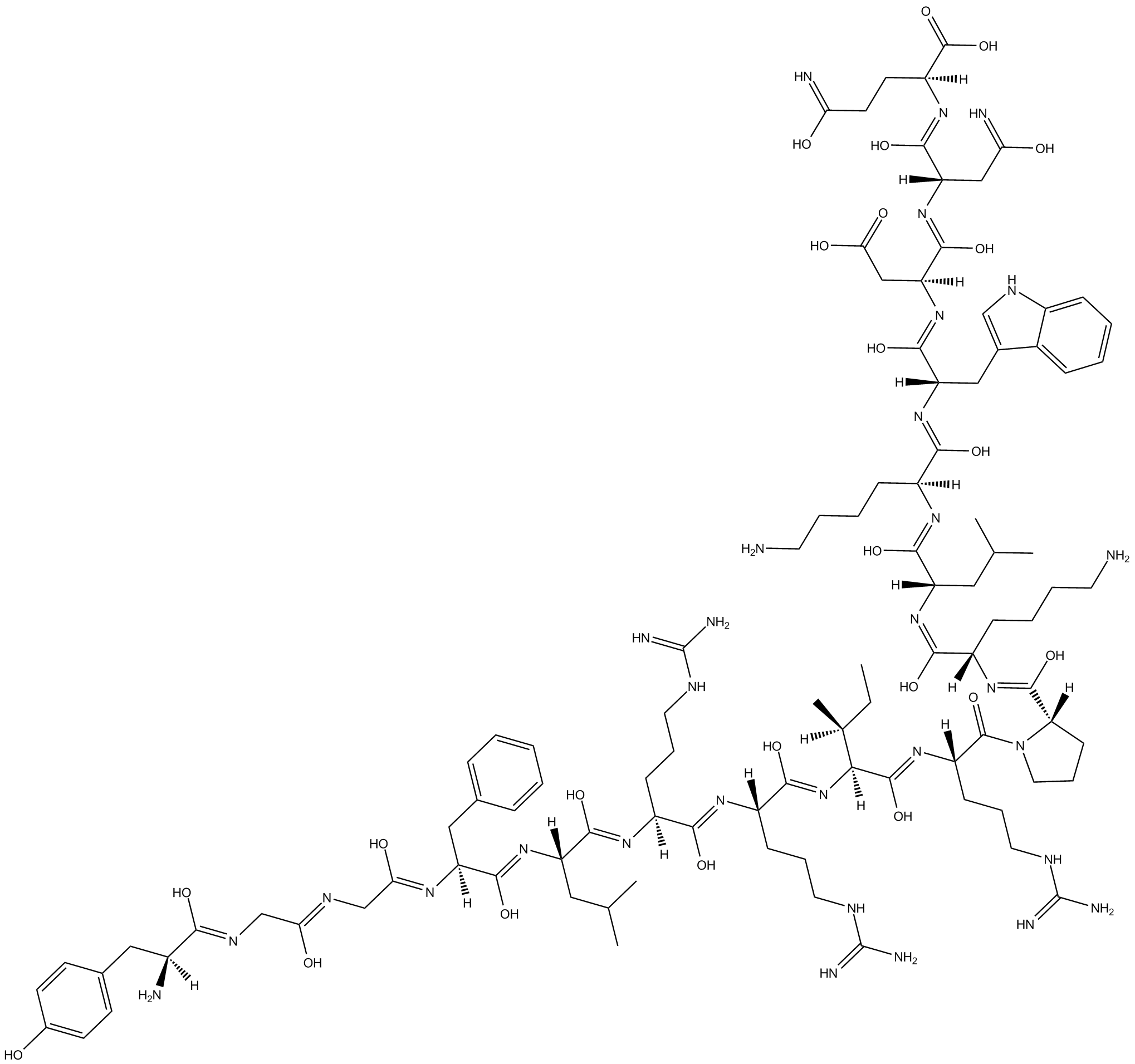
-
GC35917
Dynorphin A (1-10) TFA
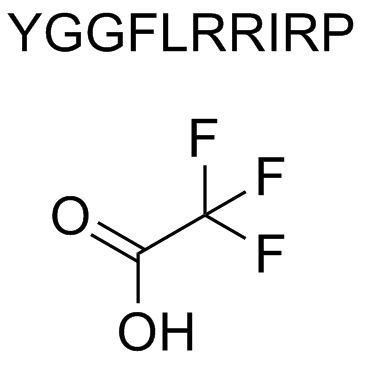
-
GA21407
Dynorphin A (1-8)
Dynorphin A (1-8) ist das vorherrschende Opioidpeptid, das in Plazentagewebeextrakten identifiziert wurde.
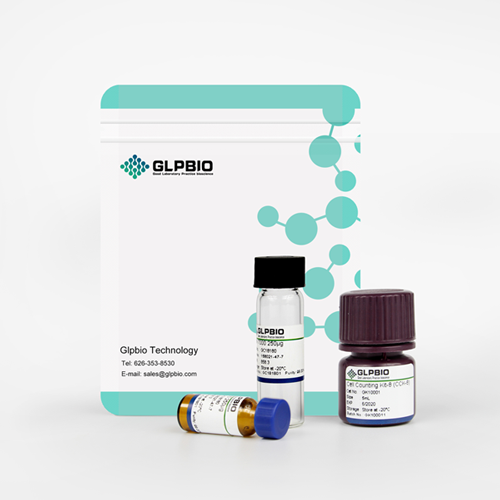
-
GC35918
Dynorphin A 1-10
Dynorphin A 1-10, ein endogenes Opioid-Neuropeptid, bindet an die extrazelluläre Schleife 2 des κ-Opioid-Rezeptors.

-
GC15078
Dynorphin B
endogenous agonist for the kappa opioid receptor
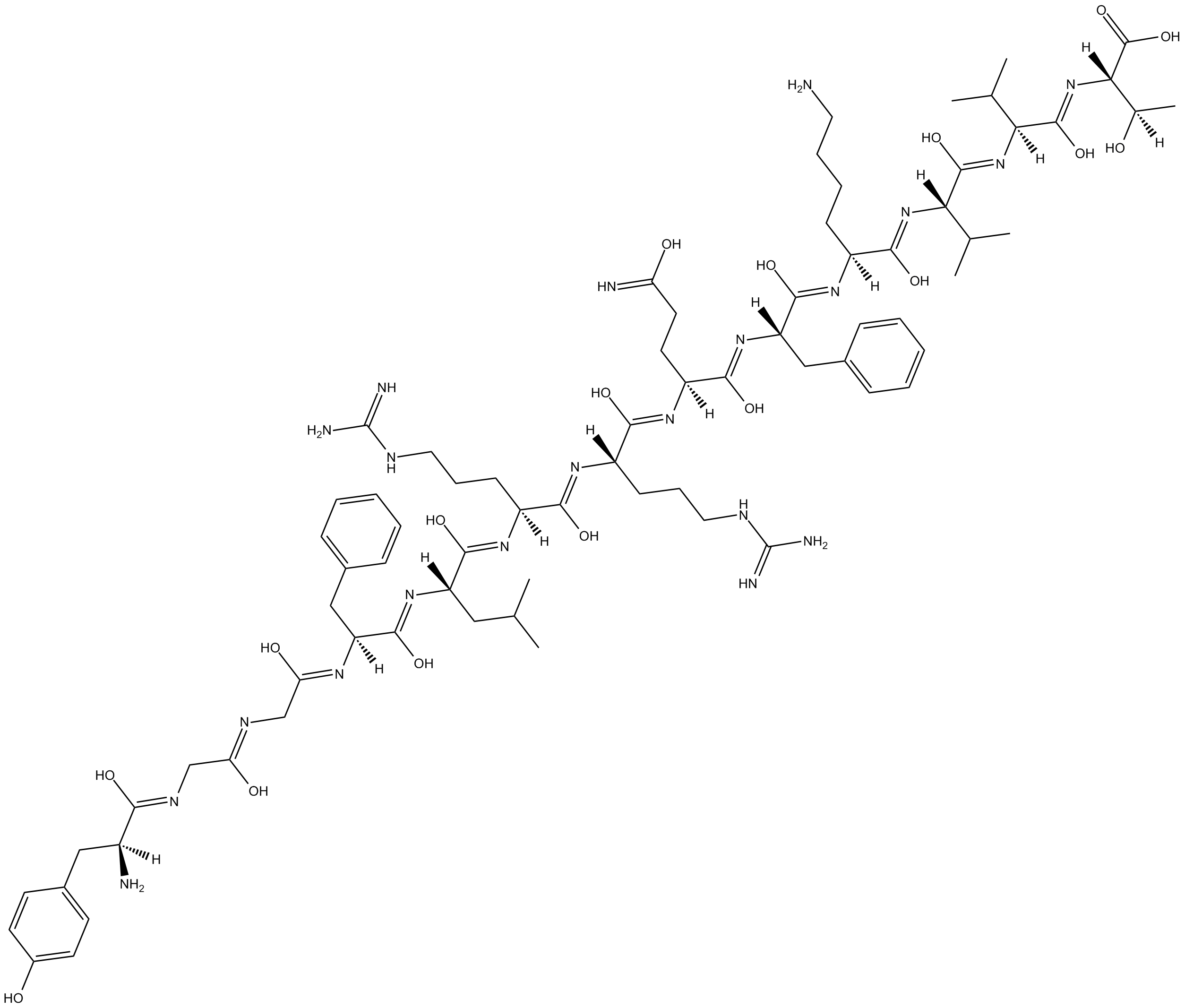
-
GC35919
Dynorphin B (1-13) (TFA)
Dynorphin B (1-13) TFA wirkt als Agonist auf den Opioid-κ-Rezeptor.
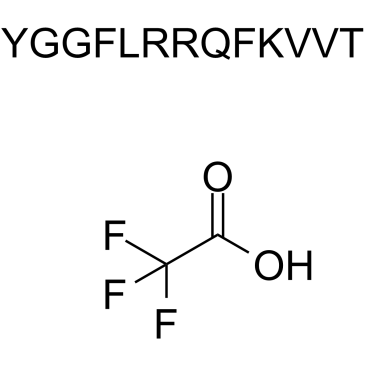
-
GC67956
Endomorphin 1 acetate
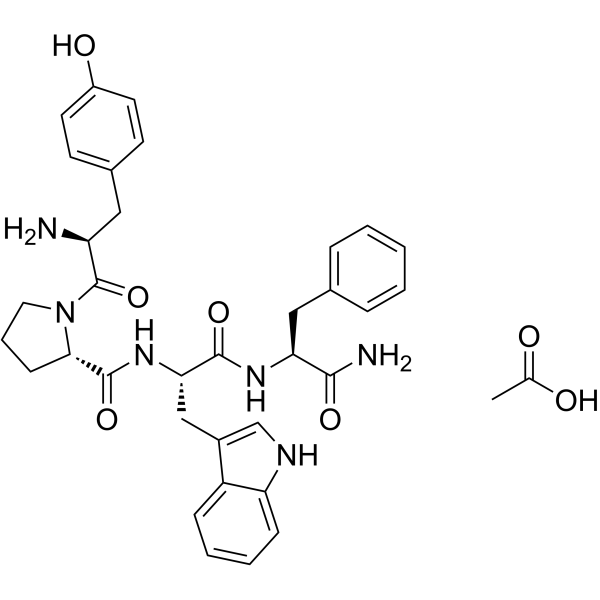
-
GC35986
Endomorphin 2 TFA
Endomorphin 2 TFA, ein hochaffiner, hochselektiver Agonist des μ-Opioidrezeptors, zeigt vernÜnftige AffinitÄten fÜr kappa3-Bindungsstellen mit einem Ki-Wert zwischen 20 und 30 nM.
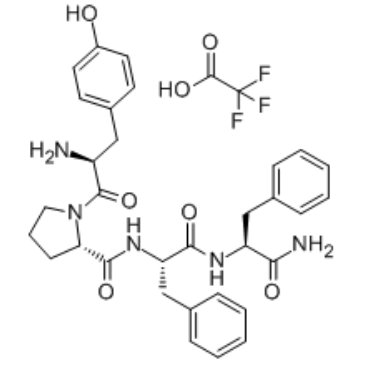
-
GP10065
Endomorphin-1

-
GC10059
Endomorphin-2
Endomorphin-2, ein hochaffiner, hochselektiver Agonist des μ-Opioidrezeptors, zeigt vernünftige Affinitäten für kappa3-Bindungsstellen mit einem Ki-Wert zwischen 20 und 30 nM.
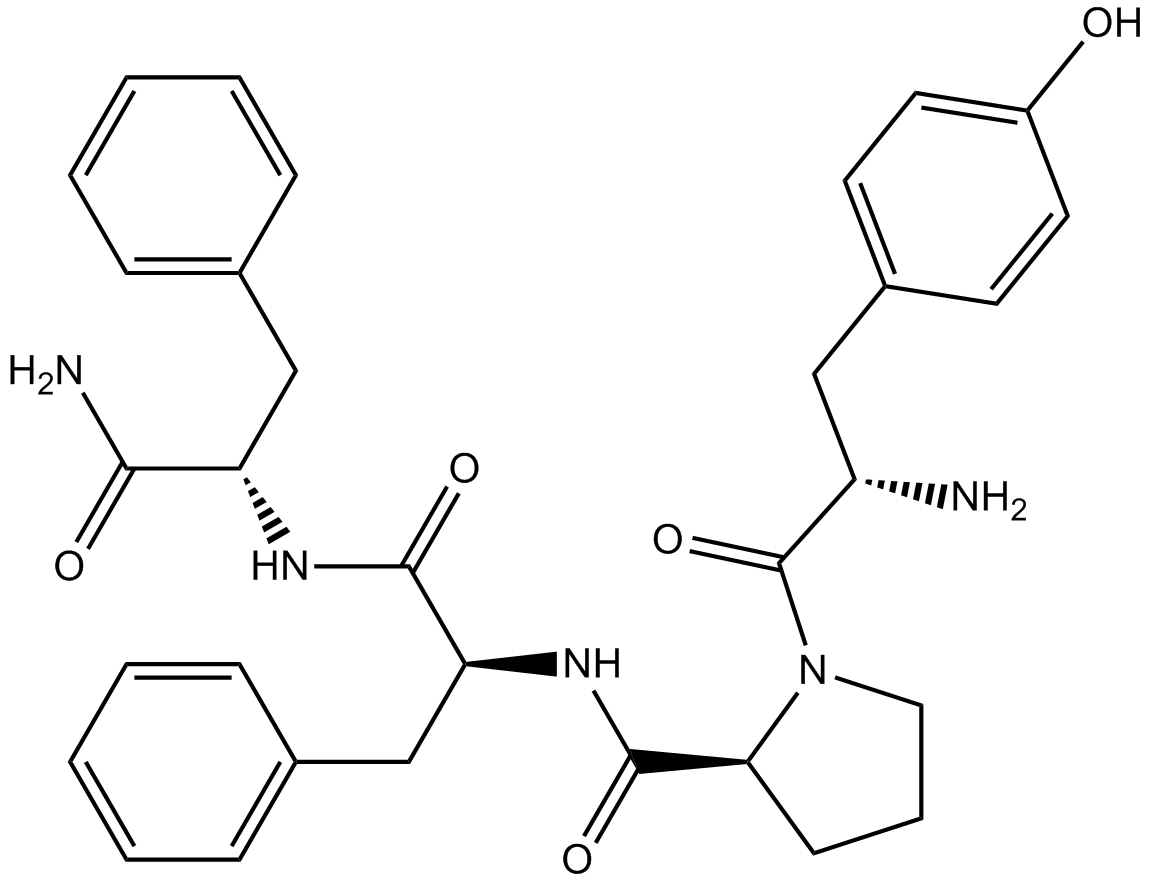
-
GC15874
FIT
δ-opioid agonist, irreversible
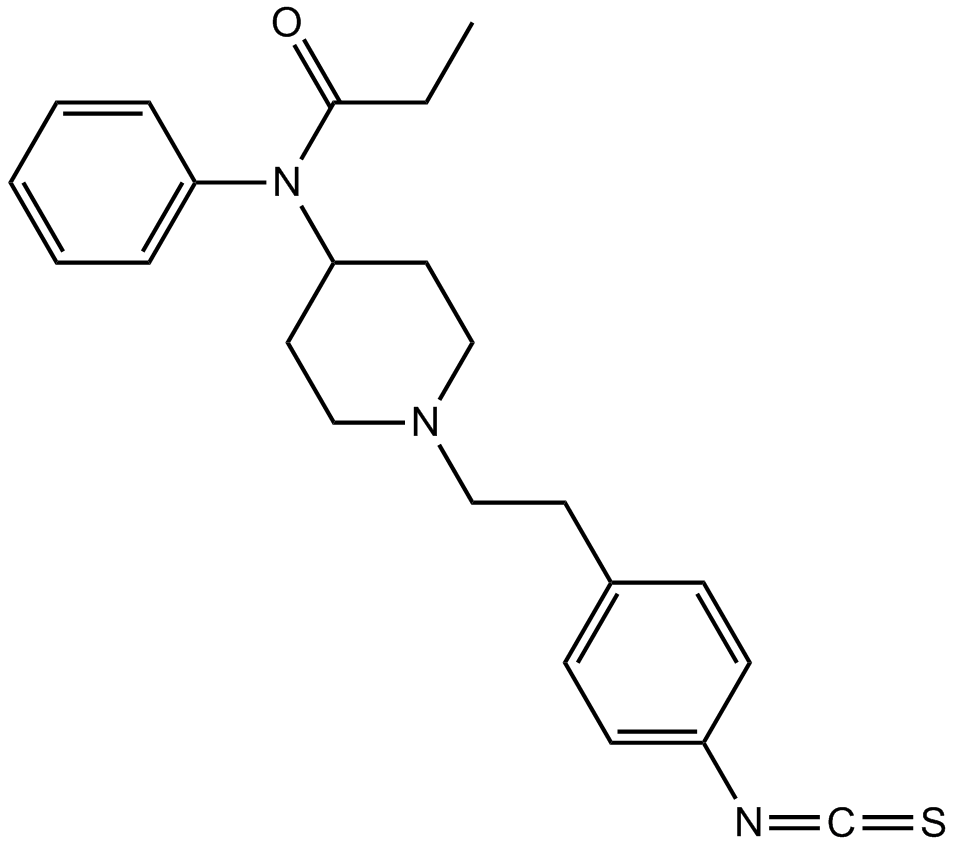
-
GC60857
Frakefamide TFA
Frakefamid TFA ist ein starkes Analgetikum, das als peripher aktiver μ-selektiver Rezeptoragonist wirkt.
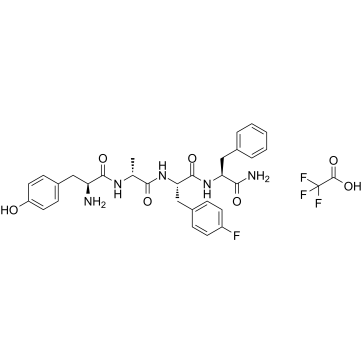
-
GC30328
Gluten Exorphin C
Glutenexorphin C ist ein opioides Peptid, das aus Weizengluten gewonnen wird.
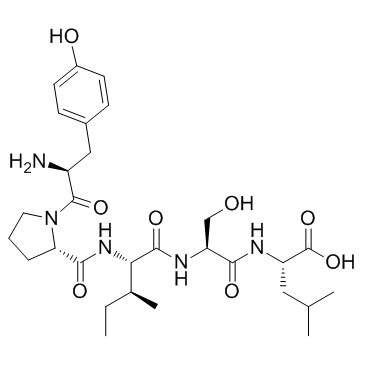
-
GC15843
GNTI dihydrochloride
κ opioid receptor antagonist
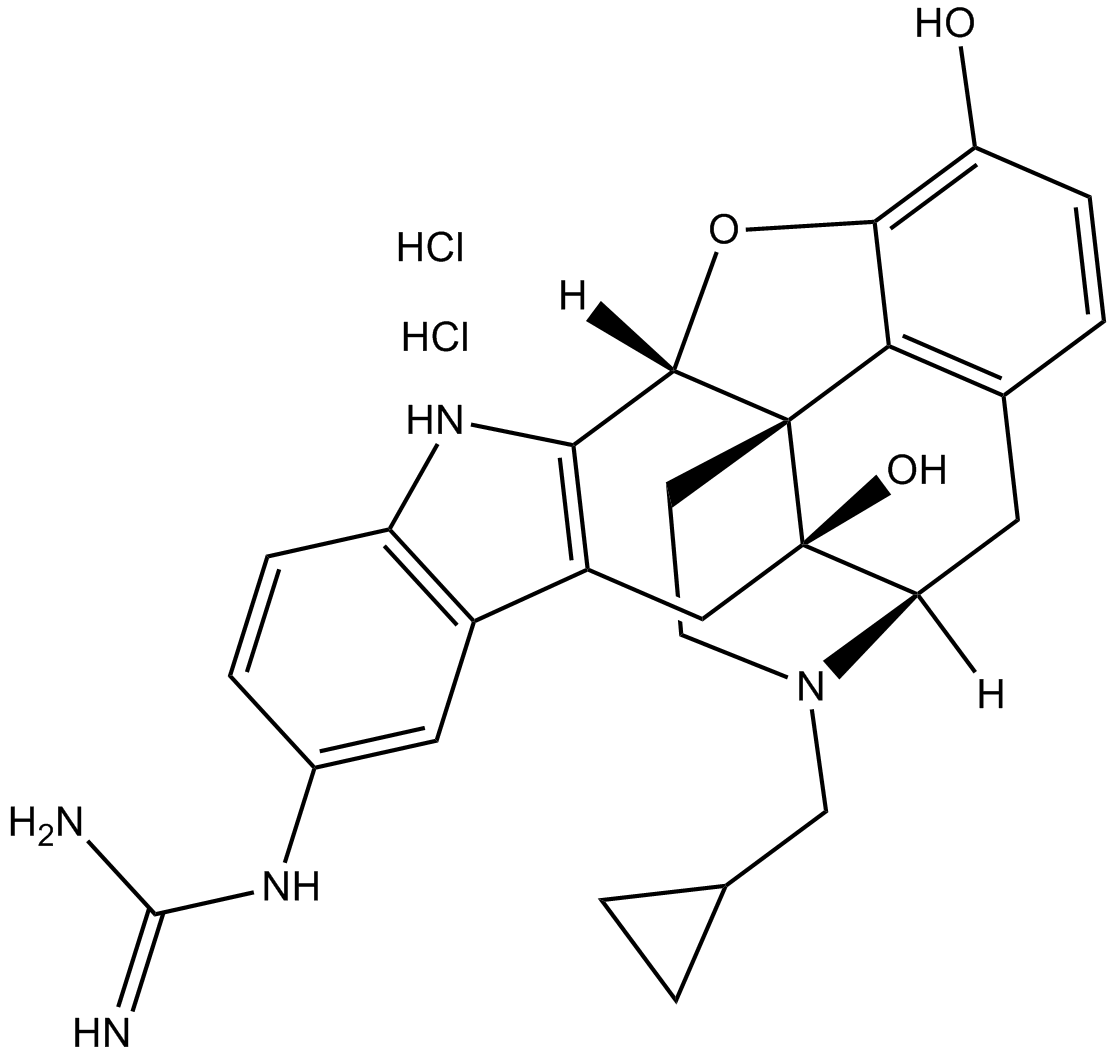
-
GC14739
GR 89696 fumarate
κ-opioid agonist

-
GC68427
GSK1521498 free base
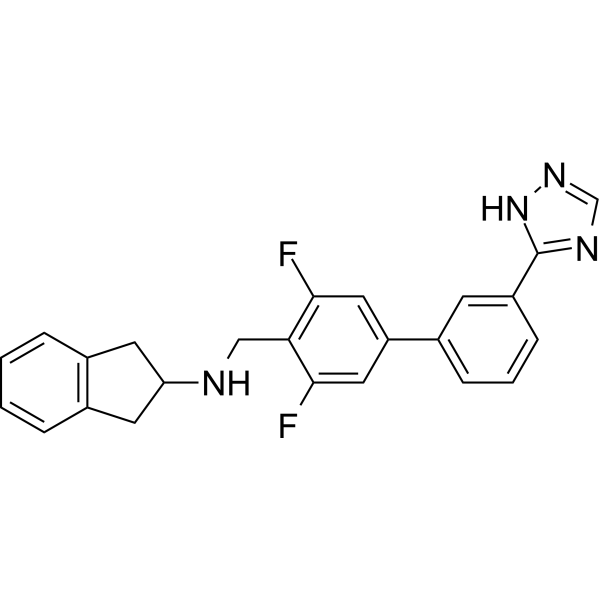
-
GA22290
H-D-Phe-Cys-Tyr-D-Trp-Arg-Thr-Pen-Thr-NH₂
CTAP, an analog of CTOP, is a selective µ-opioid receptor antagonist.

-
GC43808
Hecogenin Acetate
Hecogeninacetat ist ein sapogenin-acetyliertes Steroid mit entzÜndungshemmenden und antinozizeptiven Eigenschaften.

-
GC32489
Hemorphin-7
Hemorphin-7 ist ein Hemorphin-Peptid, ein endogenes Opioid-Peptid, das von der β-Kette von HÄmoglobin abgeleitet ist.

-
GC11639
ICI 154,129
Selective δ opioid antagonist
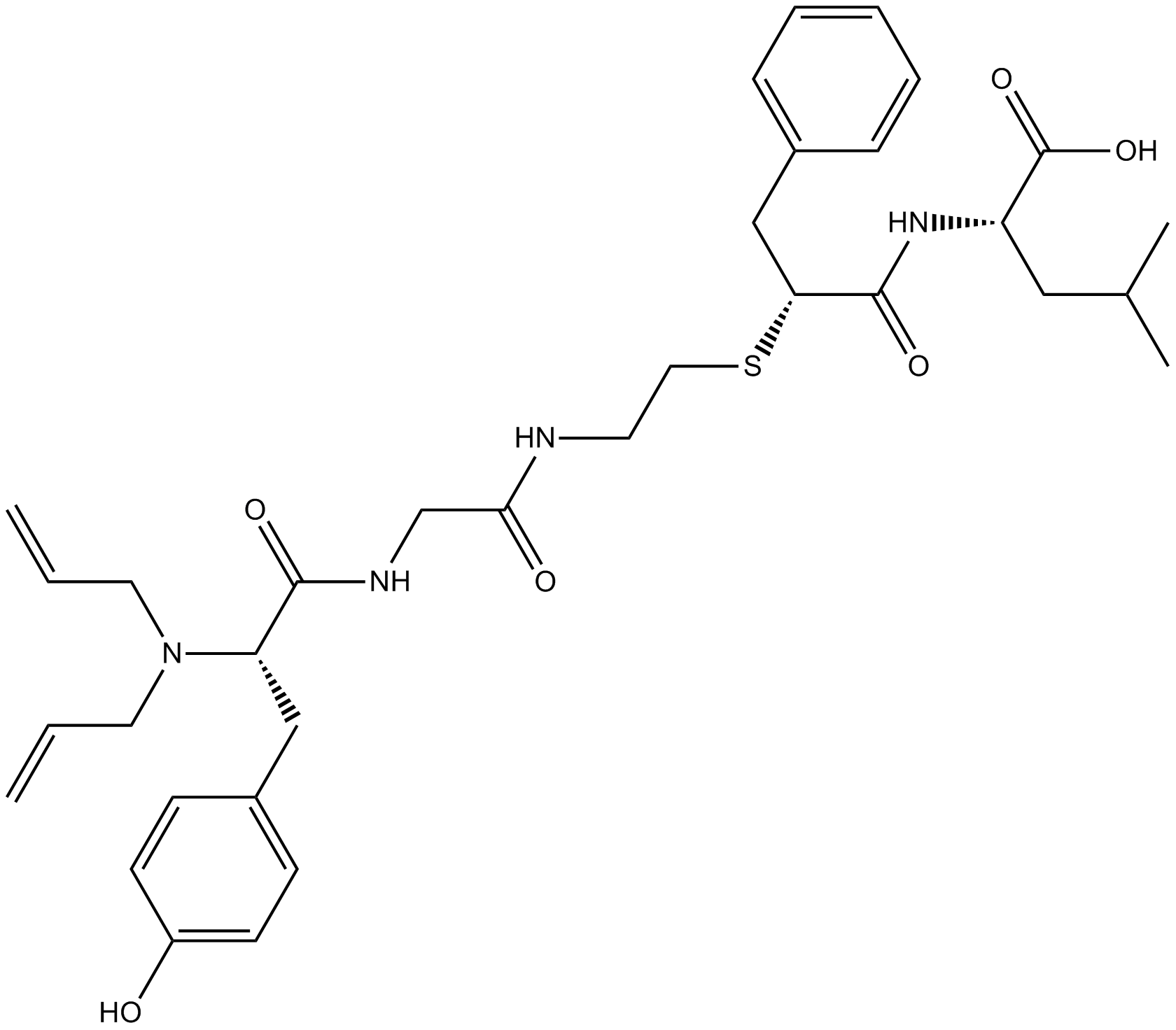
-
GC16193
ICI 174,864
Selective δ opioid antagonist
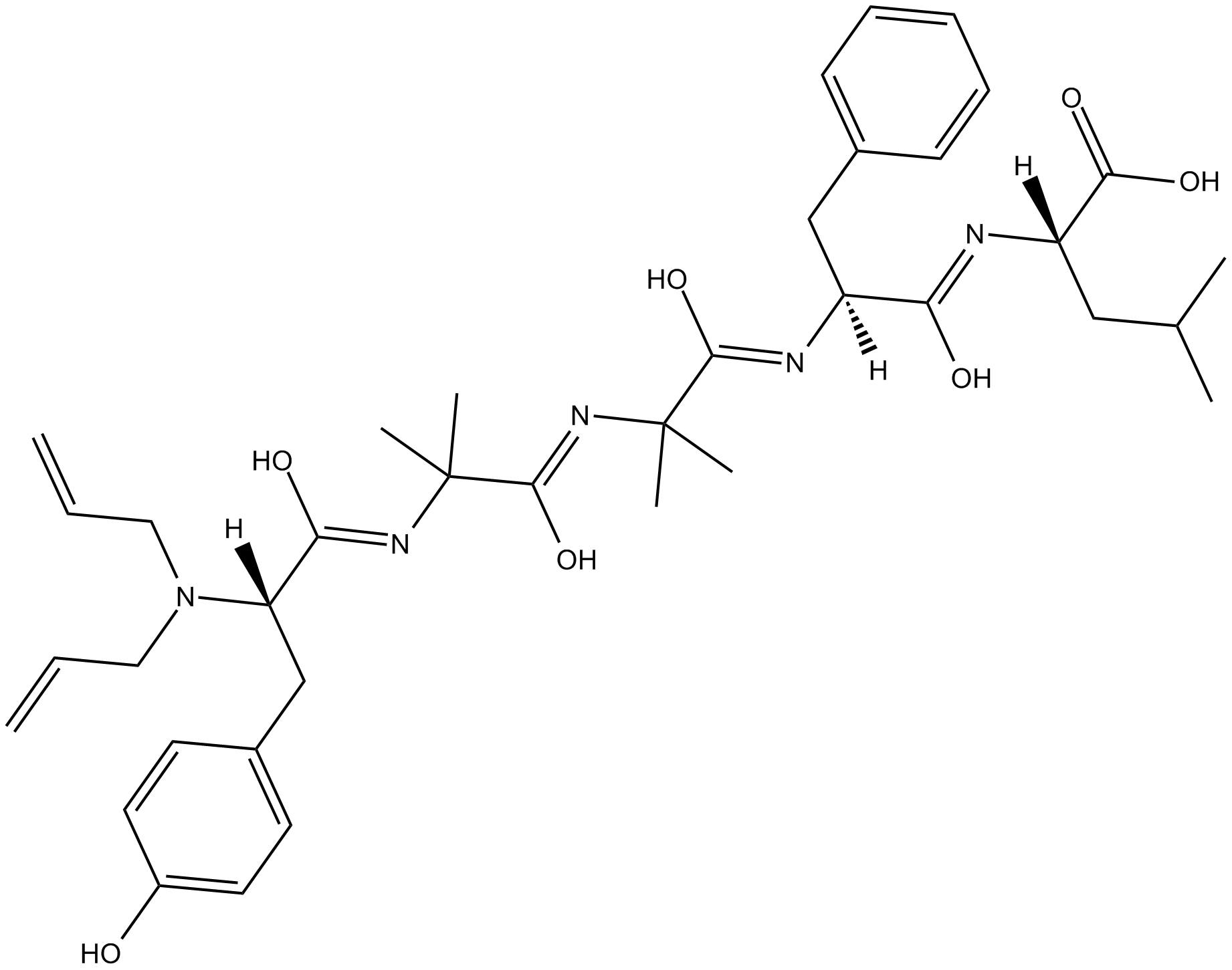
-
GC12534
ICI 199,441 hydrochloride
ICI 199,441 Hydrochlorid ist ein potenter und selektiver κ-Opioid-Rezeptor-Agonist.
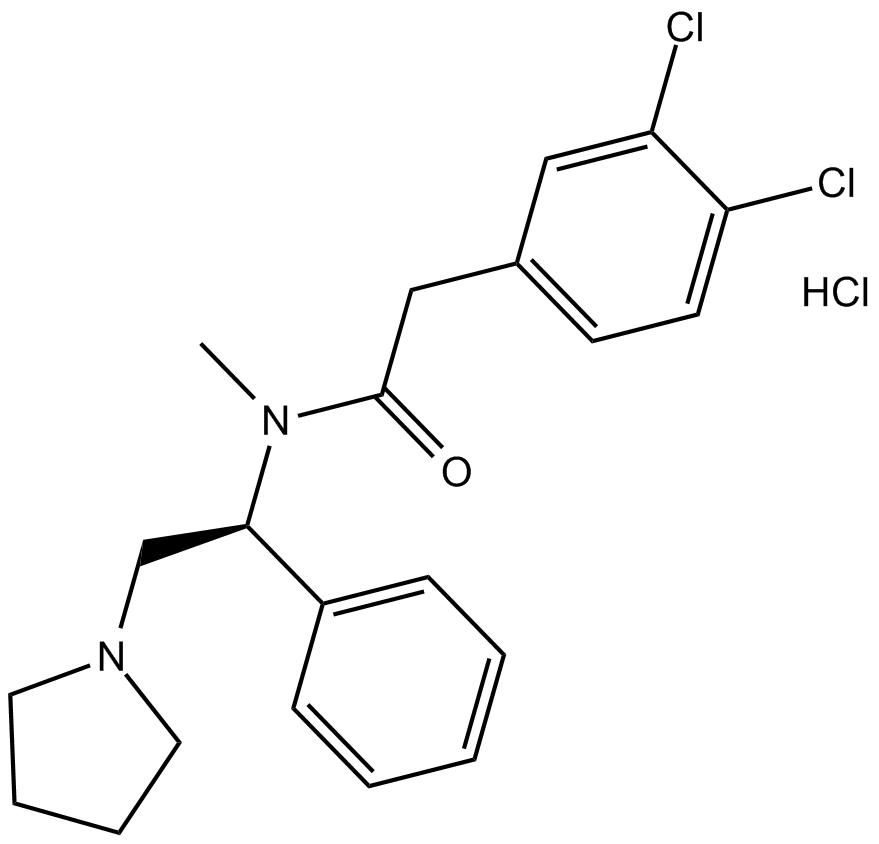
-
GC13097
ICI 204,448 hydrochloride
κ opioid receptor agonist

-
GC17939
JDTic
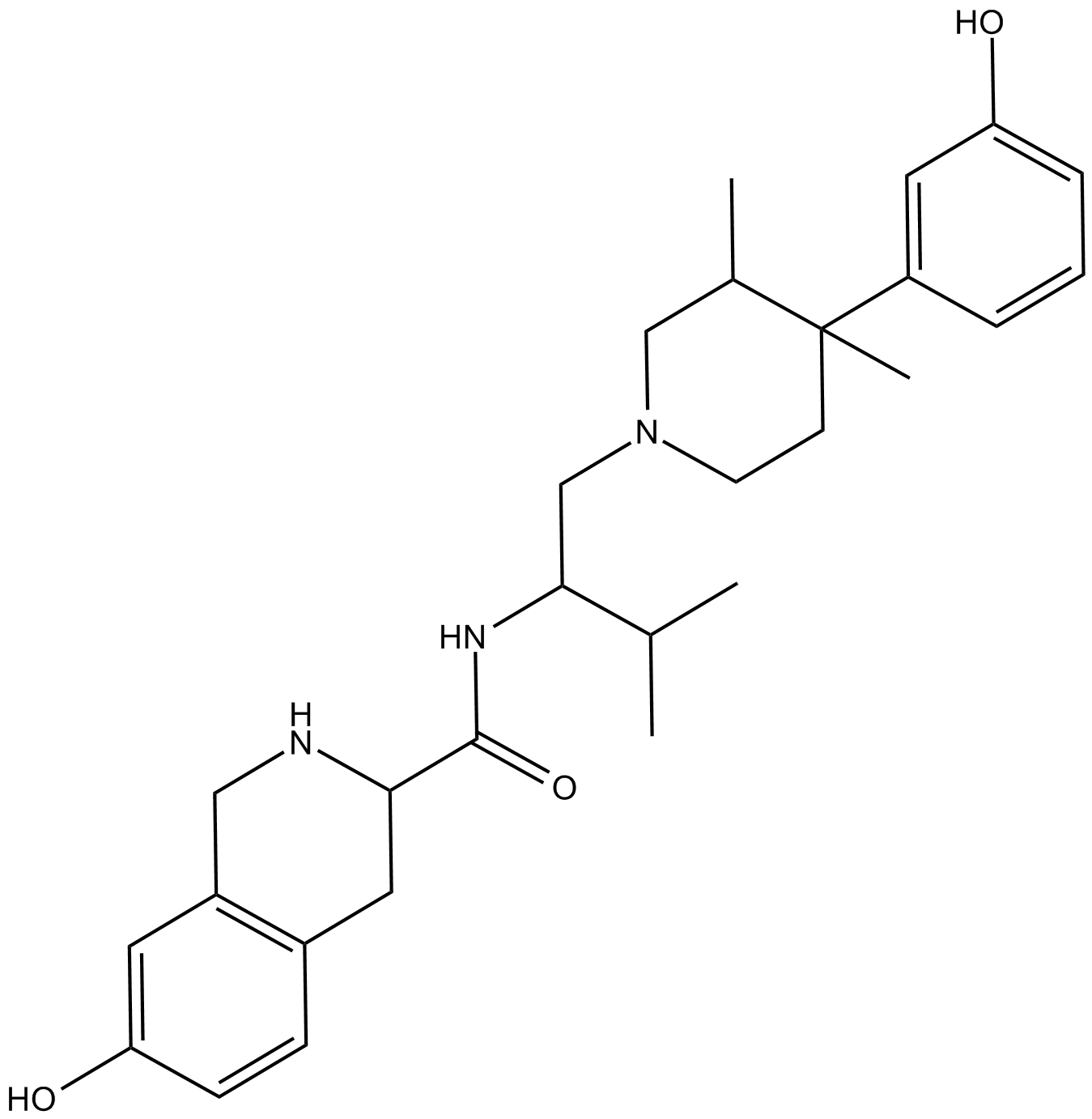
-
GC17624
JDTic 2HCl
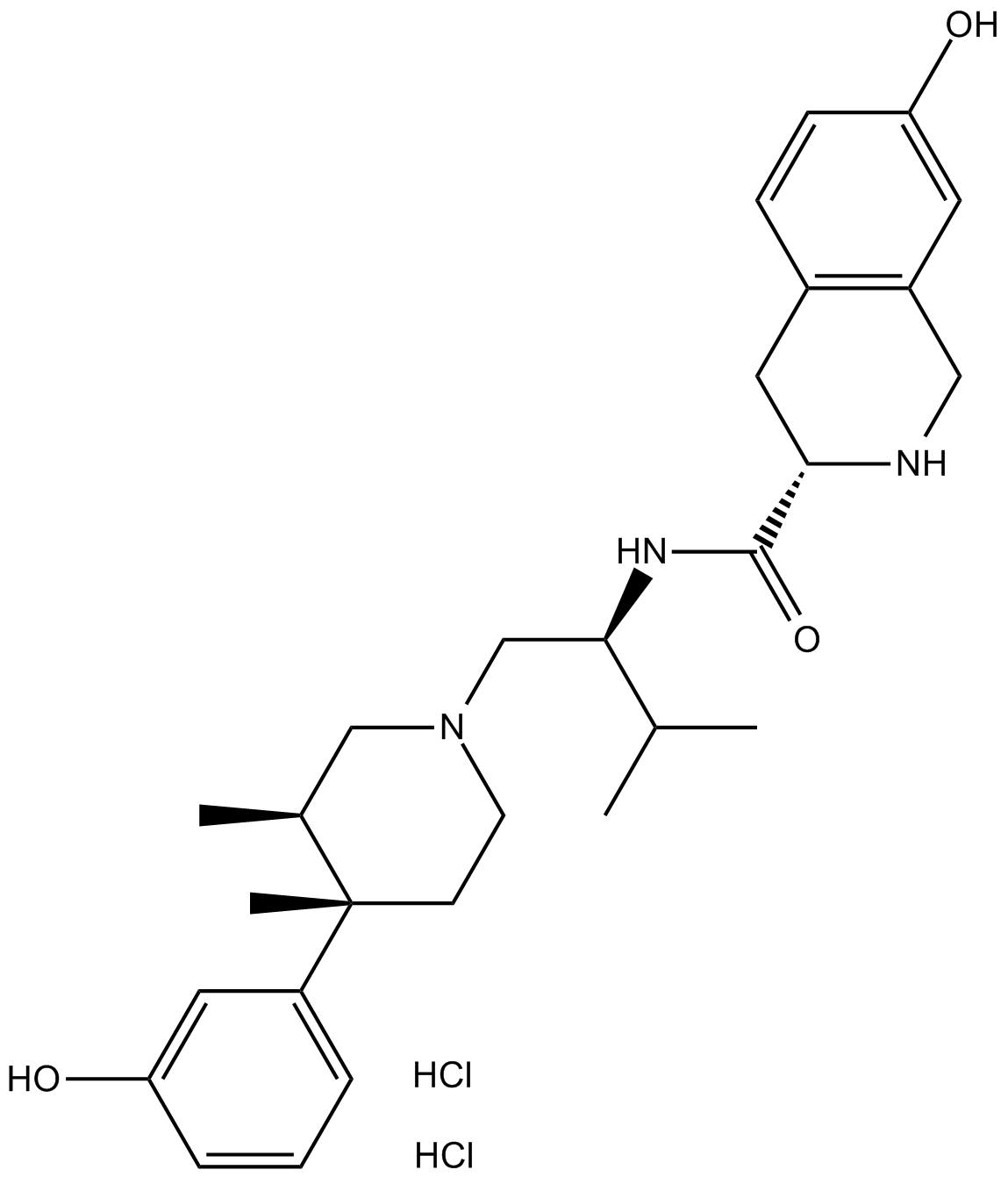
-
GC11826
JTC-801
JTC-801 ist ein selektiver Opioidrezeptor-like1 (ORL1)-Rezeptorantagonist, der mit einem Ki-Wert von 8,2nM an den ORL1-Rezeptor bindet.
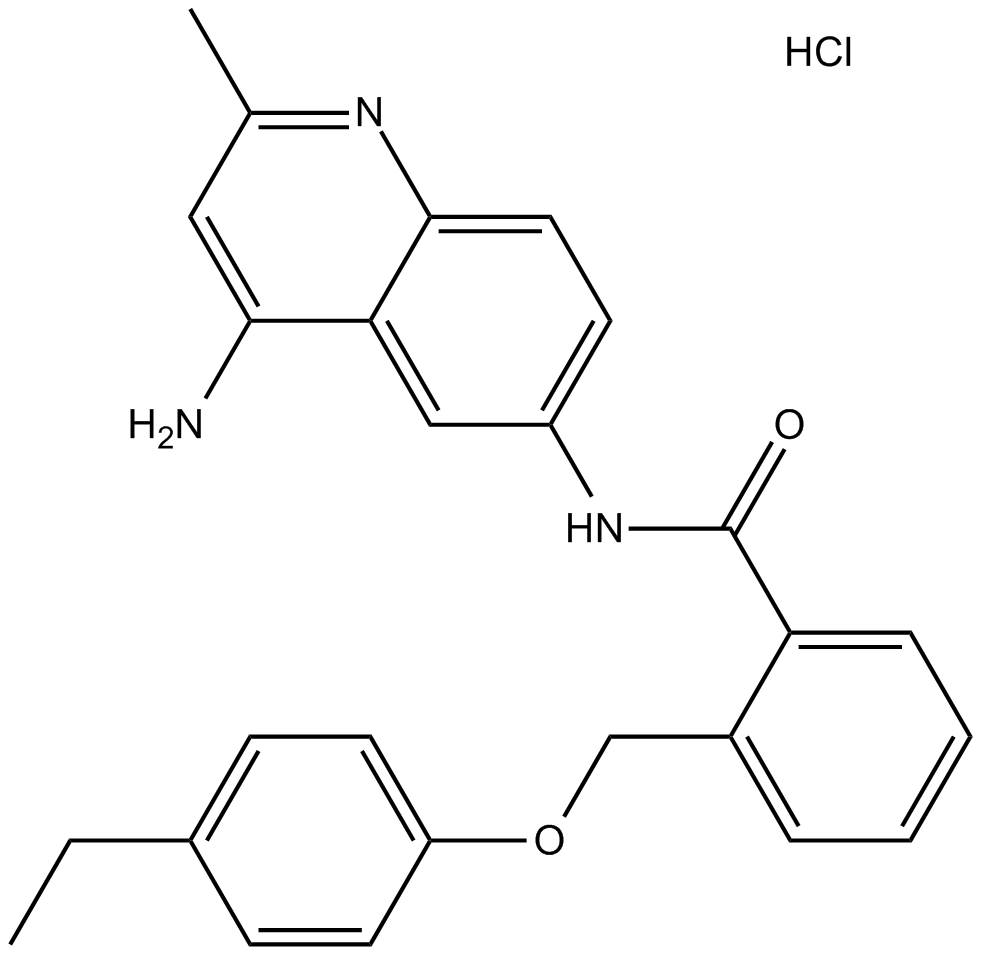
-
GC31151
Kelatorphan
Kelatorphan ist ein vollstÄndiger Inhibitor von Enzymen, die Enkephalin abbauen.
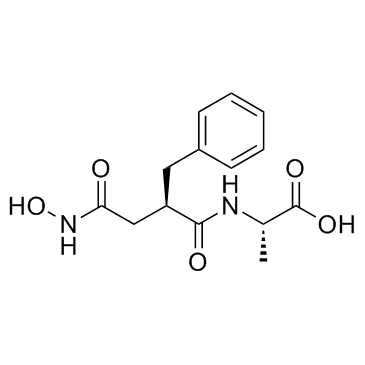
-
GC61003
Loperamide D6 hydrochloride
Loperamid D6-Hydrochlorid (R-18553 D6-Hydrochlorid) ist ein mit Deuterium markiertes Loperamid-Hydrochlorid.
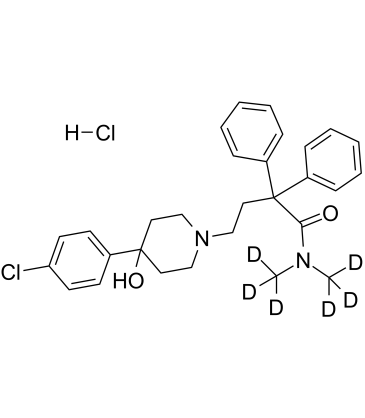
-
GC36479
Loperamide hydrochloride
Loperamid (Hydrochlorid) (R-18553 (Hydrochlorid)) ist ein Opioid-Rezeptor-Agonist.
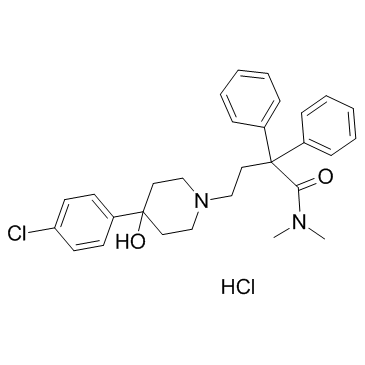
-
GC36508
LY-2940094
LY-2940094 (BTRX-246040) ist ein potenter, selektiver und oral verfügbarer Nociceptin-Rezeptor (NOP-Rezeptor)-Antagonist mit hoher Affinität (Ki\u003d0,105 nM) und antagonistischer Potenz (Kb\u003d0,166 nM).
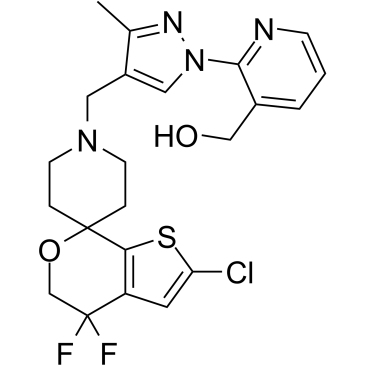
-
GC39193
LY2444296
LY2444296 ist ein oral bioverfÜgbarer, hochaffiner und selektiver kurzwirksamer Kappa-Opioidrezeptor (KOPR)-Antagonist mit einem Ki-Wert von ~1 nM.
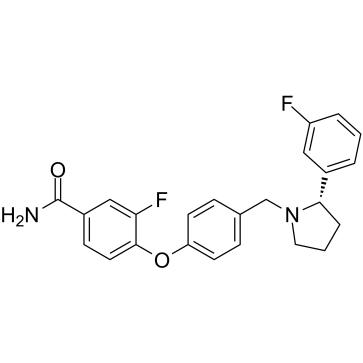
-
GC19500
LY2795050
LY2795050 ist ein kurzwirksamer selektiver κ(kappa)-Opioidrezeptor (KOR)-Antagonist.
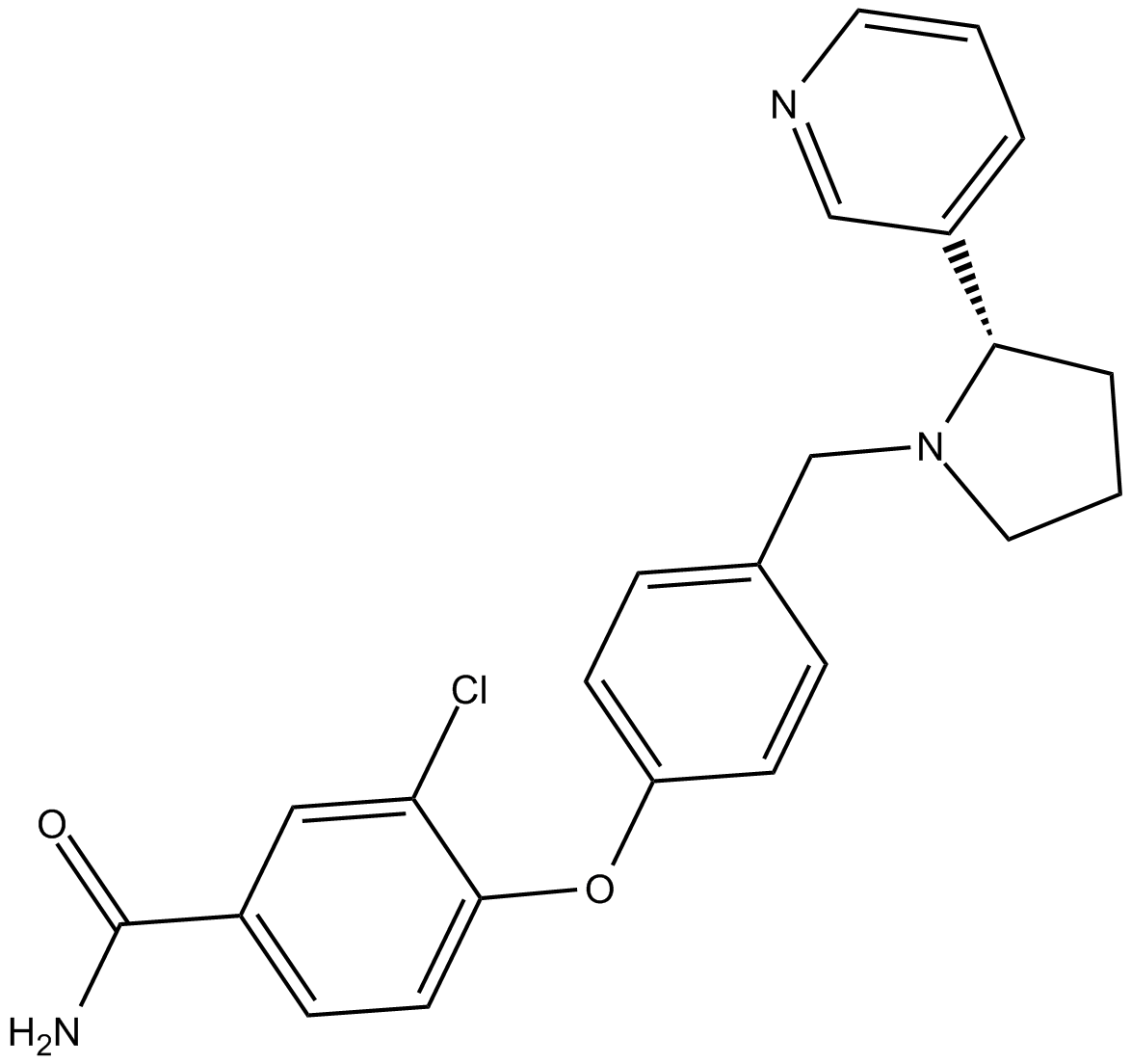
-
GC17874
Matrine
An alkaloid with diverse biological activities
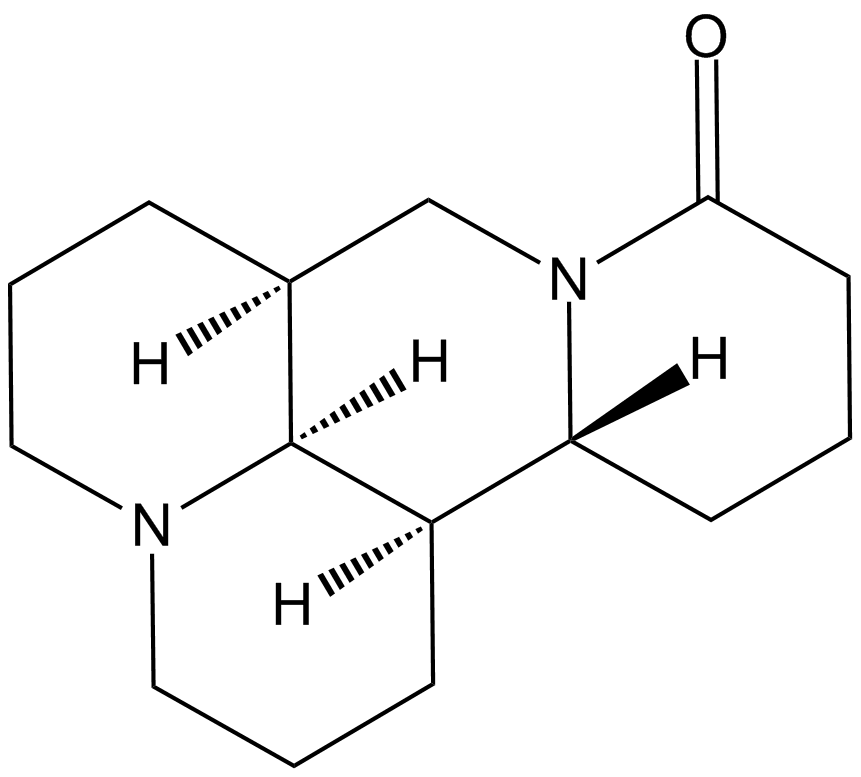
-
GC36562
MCOPPB triHydrochloride
MCOPPB 3Hcl ist ein Nociceptin-Rezeptoragonist mit einem pKi von 10,07; schwÄchere AktivitÄt an anderen Opioidrezeptoren.
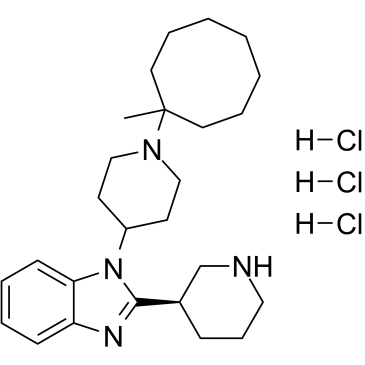
-
GC11016
Meptazinol HCl
Partial agonist at the μ1 opioid receptor
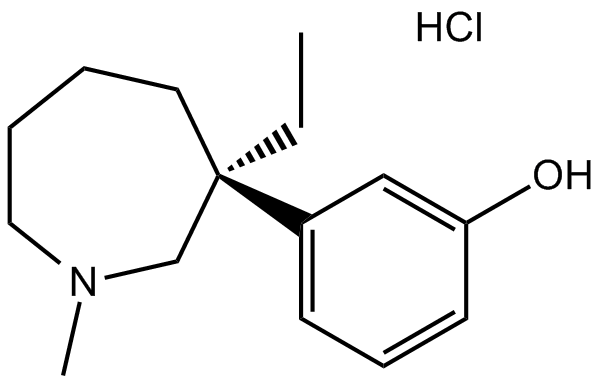
-
GC63072
Methyl-6-alpha-Naltrexol
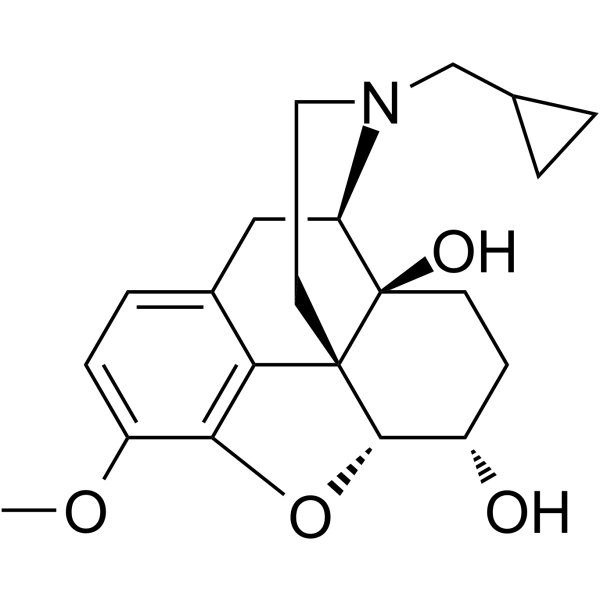
-
GC16177
Methylnaltrexone Bromide
Antagonist of peripherally acting μ-opioid
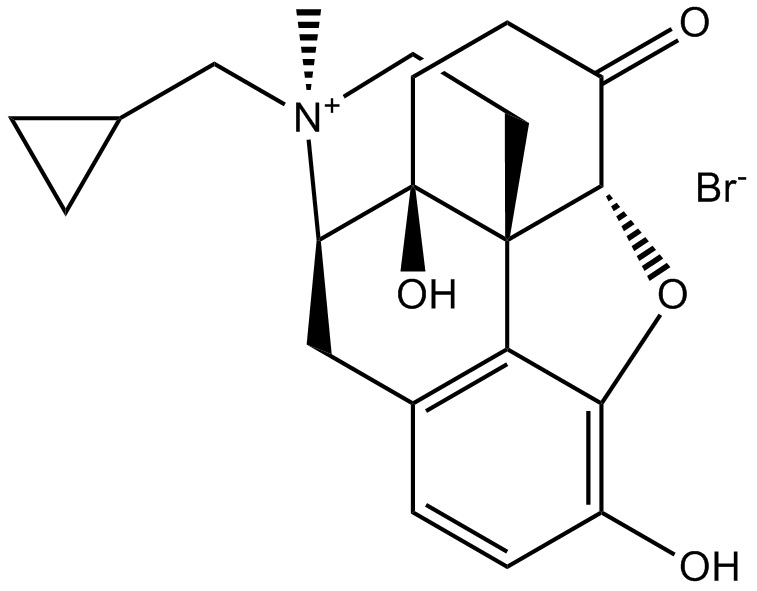
-
GC14525
ML 190
ML 190 ist ein selektiver κ-Opioidrezeptor (KOR)-Antagonist mit einem IC50-Wert von 120 nM bzw. einem EC50-Wert von 129 nM.
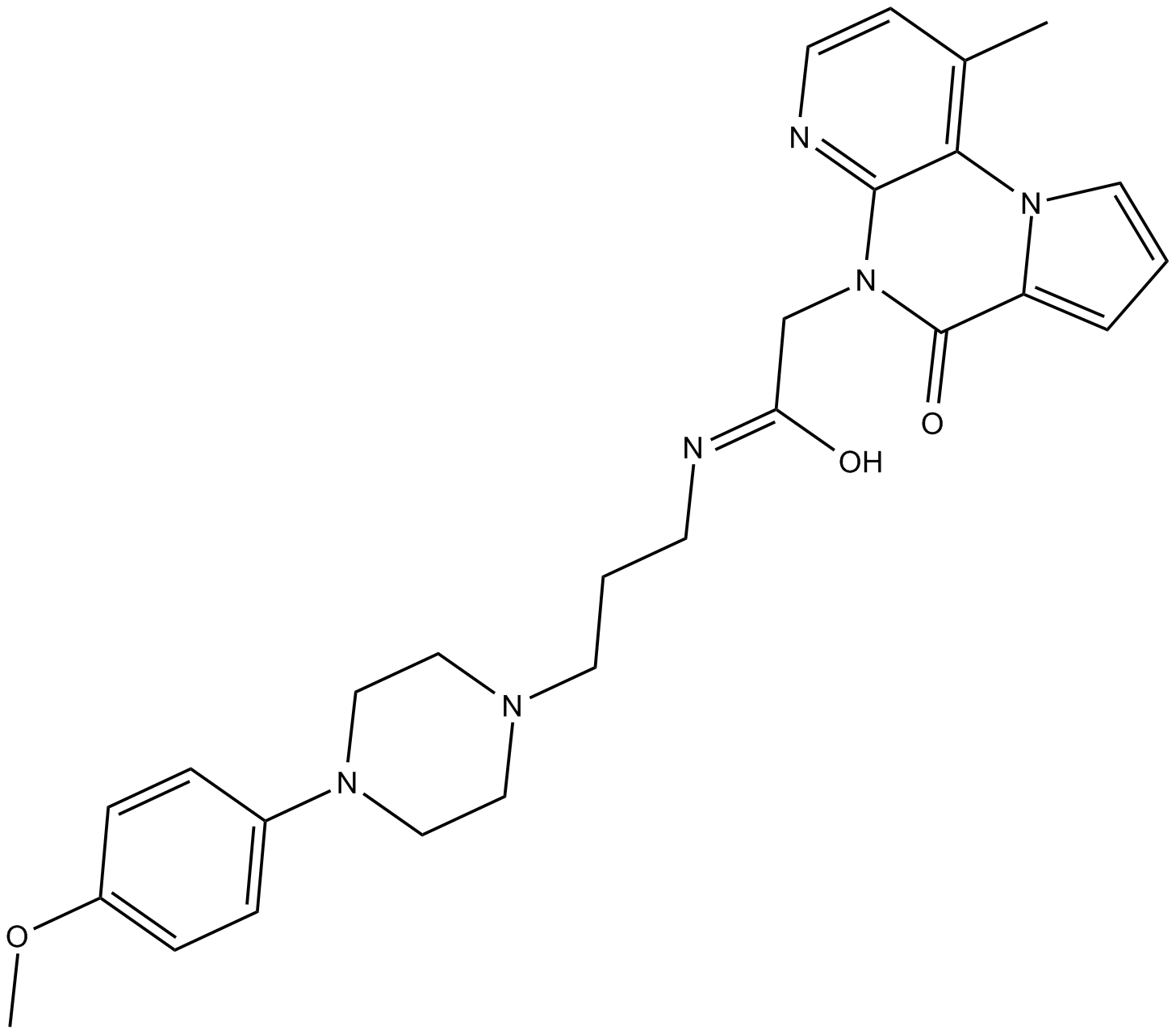
-
GC12663
N-Benzylnaltrindole hydrochloride
δ2 opioid receptor antagonist
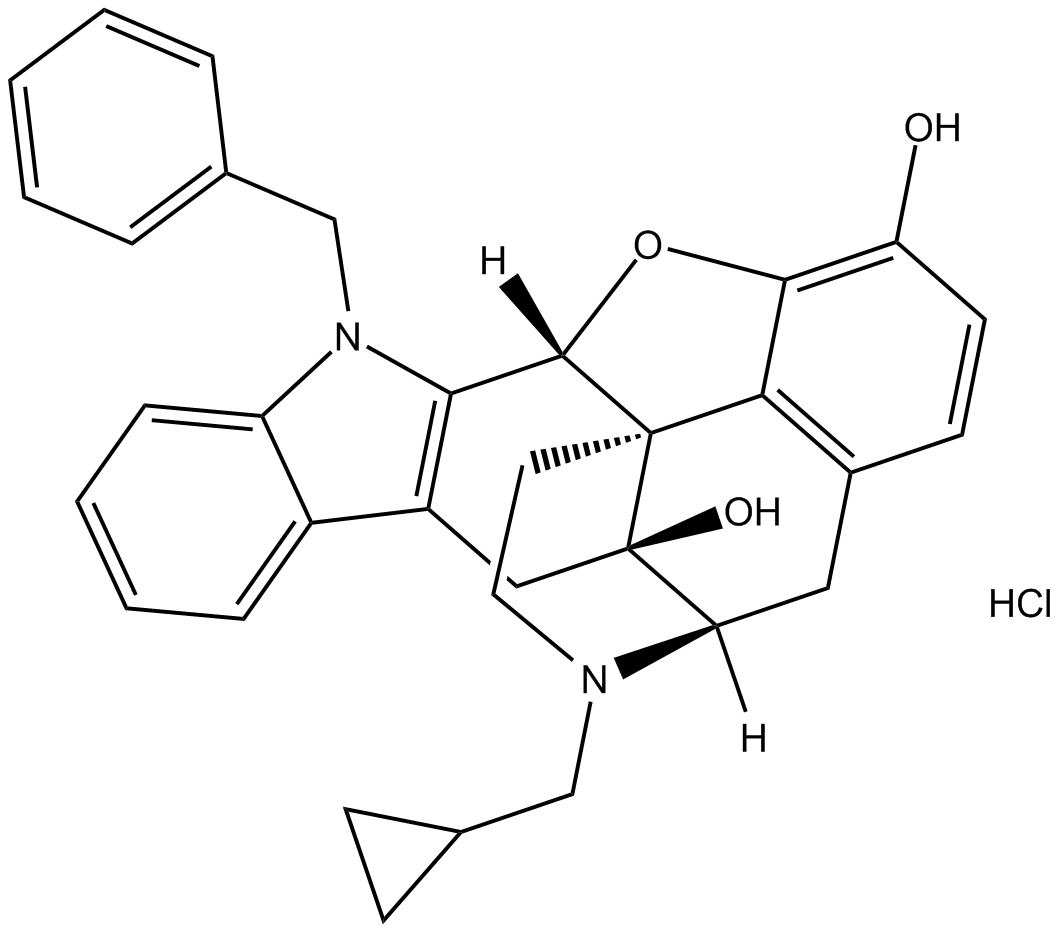
-
GC16553
N-Desmethylclozapine
N-Desmethylclozapin ist ein wichtiger aktiver Metabolit des atypischen Antipsychotikums Clozapin.
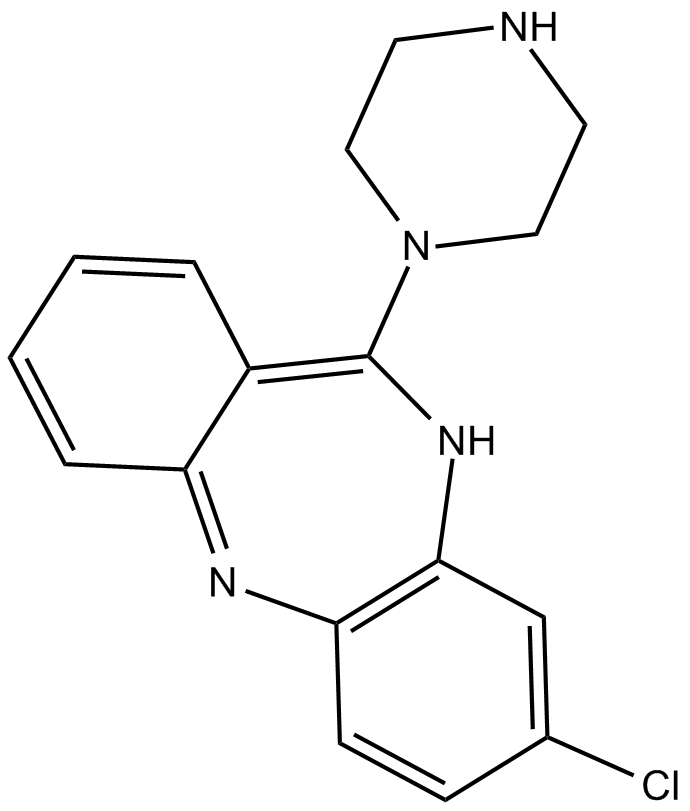
-
GC14979
N-MPPP Hydrochloride
High affinity κ agonist
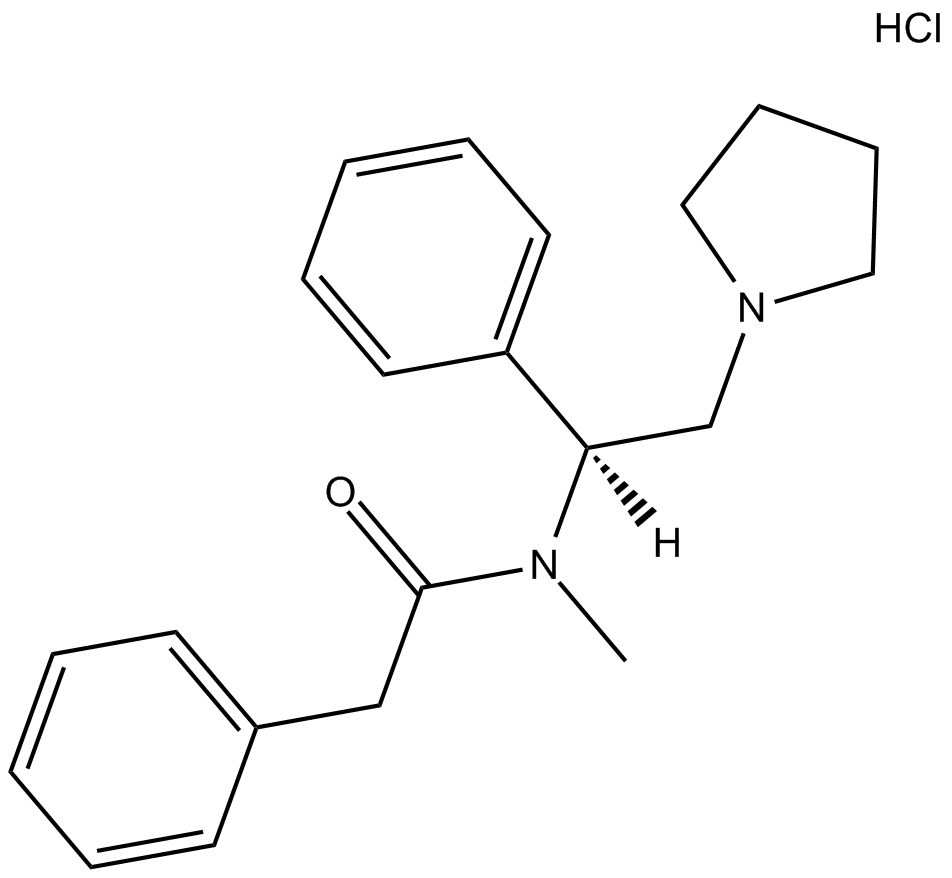
-
GC36778
N-terminally acetylated Leu-enkephalin
N-terminal acetyliertes Leu-Enkephalin ist die N-terminal acetylierte Form von Leu-Enkephalin.
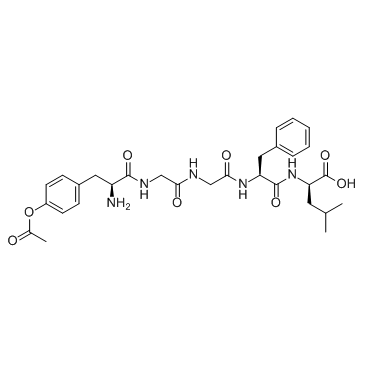
-
GC46182
Naldemedine
Naldemedin (S-297995) ist ein oral aktiver μ-Opioidrezeptorantagonist (PAMORA).

-
GC44312
Nalfurafine
Nalfurafin (TRK-820) ist ein potenter selektiver und oral aktiver G-Protein-abhÄngiger Kappa-Opioidrezeptor (KOR)-Agonist mit hohem Translationspotenzial.

-
GC30932
Naloxegol (NKTR-118)
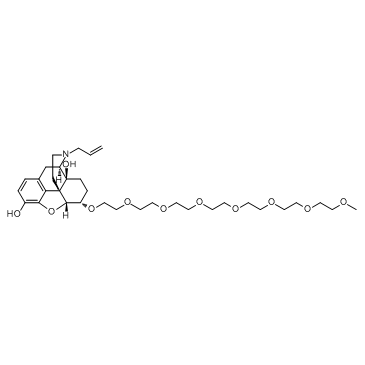
-
GC30881
Naloxegol oxalate (NKTR-118 oxalate)
A peripherally acting antagonist of the µ-opioid receptor
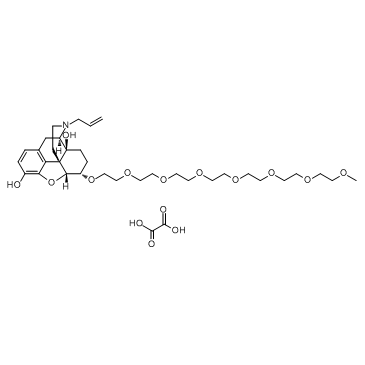
-
GC16588
Naloxonazine dihydrochloride
Naloxonazindihydrochlorid ist ein spezifischer μ-Opioidrezeptorantagonist mit einem IC50 von 5,4 nM.
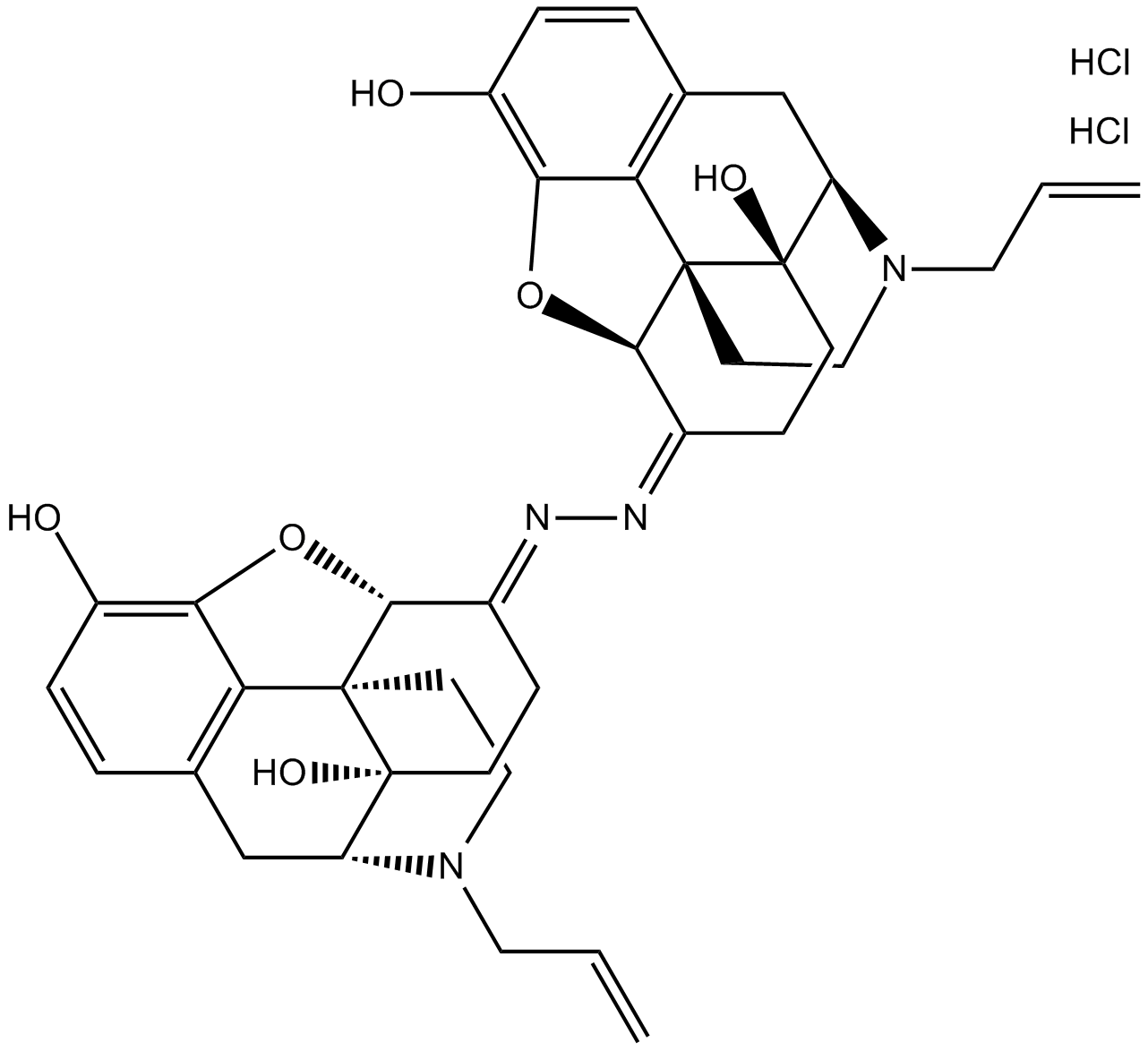
-
GC11807
Naloxone (hydrochloride)
An opioid inverse agonist drug
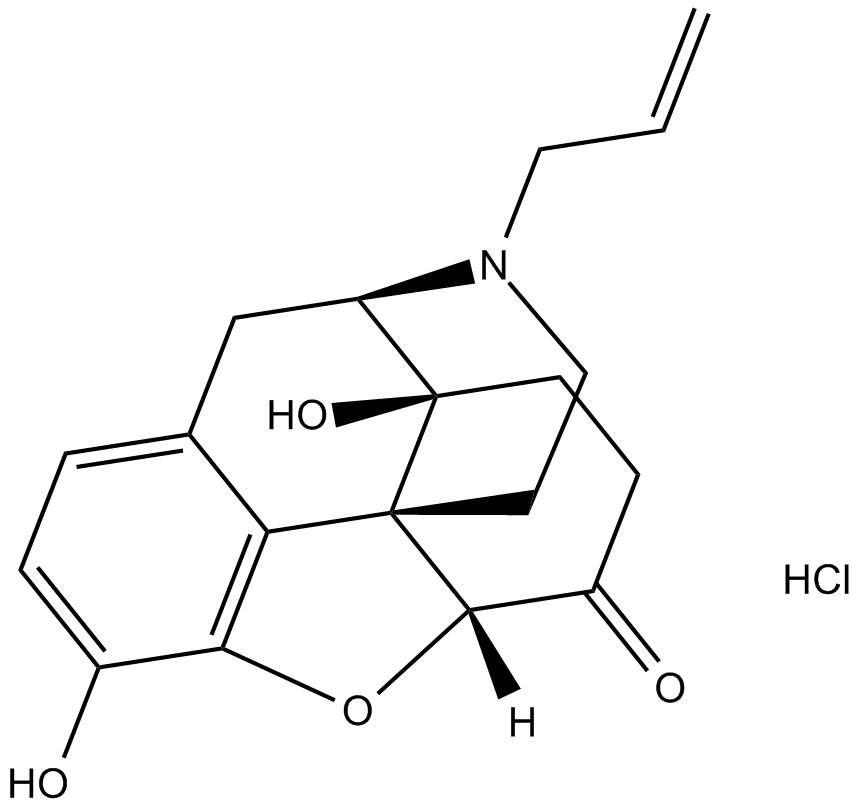
-
GC63686
Naloxone methiodide
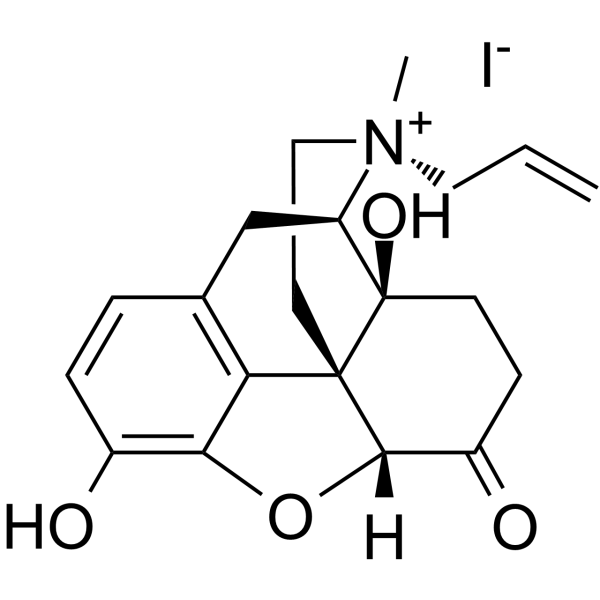
-
GC16206
Naltrexone
Opioid receptor antagonist
